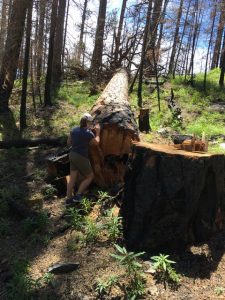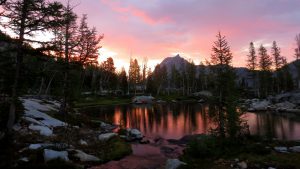For more info on current projects and events
click links below
Friends of the Bitterroot and 18 other groups send a letter to the Forest Service concerning the Sheep Creek mine.
They are asking for robust analysis, transparency, and public involvement, citing a long overdue Freedom of Information Act request for information concerning the mine.
See the letter HERE
_______________________________________________________________________________________________________________________________________
Friends of the Bitterroot challenges the Mud Creek Project
We have jointed Alliance for the Wild Rockies, Nature Ecosystem Council, and Yellowstone to the Uintas to file a complaint with the US Forest Service, The Bitterroot National Forest (BNF), and the US Fish and Wildlife Service to stop the Mud Creek Project. It will clearcut 4800 acres, it redifines old growth to allow for commercial logging that could reduce large trees in the stand by half and destroy the functionality of old growth. This will reduce biodiversity and reduce carbon storage on the forest, vital to mitigate climate change.
See the latest video on the Sheep Creek Mine
Great video and interview concerning the implications of a mine at the headwaters of the Bitterroot River with Philip Ramsey who has studied mine reclamation. Click HERE
US Critical Minerals must test for asbestos at the mine site before ground disturbing exploration activities
Read the commentary in the Missoula Current HERE
Talking Points for the proposed updates to the Community Wildfire Protection Plan (CWPP)
Please put these points into your own words and ask the commissioners to use the best available science to protect communities. Tell them how important carbon storage, mature forests, roadless lands, and wildlife are to you.
Comments are due Dec 1, 2023
Send comments to commissioners@rc.mt.gov
Include Comments on the CWPP in the subject line.
- No wildfire scientists are members of the group that assessed wildfire risk, created the proposed WUI, and assessed priority areas. The group is made up of agency personnel whose budgets rely on fulfilling politically motivated timber targets, county commissioners, the newly hired county forester, and fire chiefs from local fire departments. Only one citizen member of the Fire in the Root Council was permitted to take part in the group.
- The focus of this CWPP and the updated WUI boundary is commercial logging far from homes. This strategy is NOT a proven fire mitigation strategy. Commercial logging and prescribed fire do not stop wildfires and they do not prevent homes from being lost during a wildfire. Fire scientists have made it clear that commercial logging targets should be separate from plans to protect homes and communities. According to fire scientist Jack Cohen, “SIAM modeling, crown fire experiments, and WUI fire case studies show that effective fuel modification for reducing potential WUI fire losses need only occur within a few tens of meters from a home, not hundreds of meters or more from a home. This research indicates that home losses can be effectively reduced by focusing mitigation efforts on the structure and its immediate surroundings (https://www.fs.usda.gov/rm/pubs_other/rmrs_1999_cohen_j001.pdf).”
- It is commendable that the CWPP recommends creating fire resistant homes and reducing ignitability in the Home Ignition Zone (HIZ), 100 feet from homes. This strategy has been proven to be the only effective and the most efficient method to protect homes during wildfires including extreme wildfire events. This strategy must be more than a recommendation. Obtaining funding to assist existing home owners in making their homes more fire resistant should be a priority.
- The proposed WUI area is excessive. It is 1 ¼ miles wider than the recommended ¼ mile. It is six times the recommended distance from structures. The proposed WUI area includes roadless areas, mature and old growth forests, and important wildlife habitat.
- Roads considered “recreation and high resource value” with ¼ mile and ½ mile buffers are included in the WUI. These should not be included in the WUI. Roads are not flammable. These buffers are not necessary.
- The Lost Horse Corridor Road is within the riparian area of Lost Horse Creek, a proposed Wild and Scenic River. Logging, thinning, and prescribed burning around Lost Horse Creek will affect its Wild and Scenic quality. This area should not be a part of the WUI.
- More emphasis should be given to preventing human caused wildfires.
- The construction of temporary roads and reconstructed roads in roadless lands from proposed action items, the Bitterroot Front Project, the Mud Creek Project, and the Eastside Project, will increase the risk of human-caused ignitions.
- Campfire restrictions on public lands should automatically go into place when wildfire risk is high. When risk is very high, stage 1 fire restrictions should go into place and when risk is extreme, stage 2 fire restrictions must go into place. In 2022, 11 days of extreme wildfire risk passed before any campfire restrictions were enacted on public lands.
- Thank you for recommending composting instead of open burning on private lands. This program should be a funding priority to prevent wildfire starts near homes.
- Enforcement and education should be increased to stop illegal, off road, motorized use. This will prevent sparks from igniting vegetation.
- Buffers around ski resorts and hot springs should be no more than 100 feet. Tax payer dollars should not be spent to protect private ski resorts and hot springs. No work should be done around these facilities unless the owners comply with HIZ recommendations and make structures fire resistant.
- Climate science must be considered in the CWPP. The loss of mature and old growth trees will greatly reduce carbon storage and carbon sequestration in forests. Science shows that tree saplings take at least 20 years to sequester carbon. We do not have 20 years to wait. Young trees actively emit carbon; mature trees pull carbon from the air and sequester it long term. Current carbon stores and sequestration capabilities must be preserved not removed by commercial logging.
- The proposed logging projects in the plan will increase smoke from fire in the Valley. Open burning and prescribed burns should not be allowed during extreme high pressure and Stagnant Air Advisories to protect the health and well-being of the community.
The Bitterroot National Forest burned during predicted strong high pressure and during an air stagnation advisory. See report here.
Return of the Grizzly Rescheduled
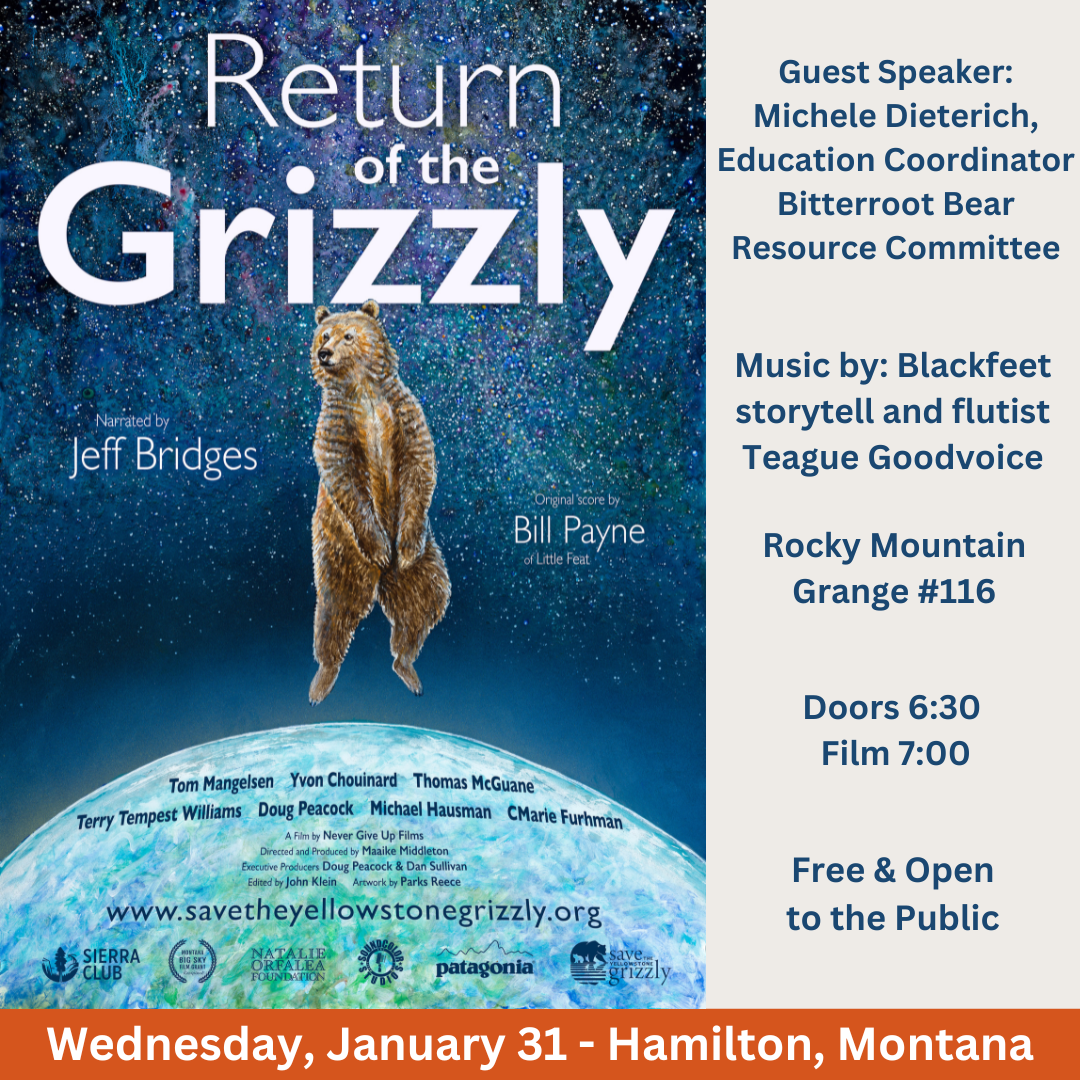
Comments due on 5 projects affecting old growth, wildlife, fish and watersheds
Bitterroot Front Comments Due Sept 16
143,983 acre project area from McClain Creek to Trapper Creek
27,477 acres of commercial logging, 138,280 acres of management
For talking points and how to comment click the button below.
Soda Baker Restoration and Fuel Break Project due Sept 14
2300 acre project area from Trapper Creek to Soda Springs Creek
2000 acres of commercial logging, and 300 acres of prescribed burning
3 more Fuel Breaks Comments Due Sept 14
These fuel breaks are each 2500-3000 acres
All acres are non-commercial thinning and burning with possible commercial logging in bull trout spawning areas and bull trout critical habitat.
Programmatic Forest Plan Amendment Decision signed.
This amendment will:
- Change the definition of old growth allowing them to commercially log it while leaving old growth characteristics "to the extent possible."
- Change the retention mandates for old growth to "retain old growth characteristics to the extent possible."
- Allow old growth to be clear cut even if there is not another stand to replace it in the area.
- Allow more roads to be built in elk habitat and on the forest fragmenting habitat and contaminating streams.
- Remove snag retention standards. Snags are wildlife habitat for birds like pileated woodpeckers and bluebirds, and many critters including fishers and marten.
- Reduce the amount of coarse woody debris left after logging. It will allow contractors to leave small branches instead of larger woody debris. Small branches dry out fast and become fine fuels. Larger woody debris absorbs water and provides habitat for many animals.
- Remove thermal cover standards allowing them to reduce the canopy to very sparsely spaced trees. Wildlife need thermal cover to survive the winter and fish need the shade provided by canopys.
- Opening the canopy dries out the forest and allows wind to wreak havoc during a forest fire exacerbating fires rather than reducing them. As Jack Cohen says, when the winds are 50 mph all bets are off.
Jack Cohen who has studied home ignitions and forest fires for over 30 years says, “An appropriate definition of wildland urban disasters is a home ignition problem,” he says. “And when we start approaching the problem as a home ignition problem, then we’re not trying to control wildfire.”
The programmatic Amendment will be used for these 4 Categorical Exclusions.
Soda Baker Fuel Break (2300 acres of commercial logging)
Rye Creek Fuel Break (Up to3000 acres of slashing and burning with possible commercial logging)
Sleeping Child Fuel Break (Up to 3000 acres of slashing and burning with possible commercial logging)
Sula Fuel Break (Up to 3000 acres of slashing and burning with possible commercial logging)
We only have 14 days to comment and there is no objection or appeal offered to the public. Watch for an alert with talking points. Comments due September 14.
Bitterroot Front comments
Also watch for talking points on the Bitterroot Front Project: 144,000 acre project area, 138,000 acres of treatment area and 27,000 acres of commercial logging mostly intermediate and shelterwood (leaves 5-10 trees per acre) cuts along the entire East face of the Bitterroot Mountains. Comments due September 16.
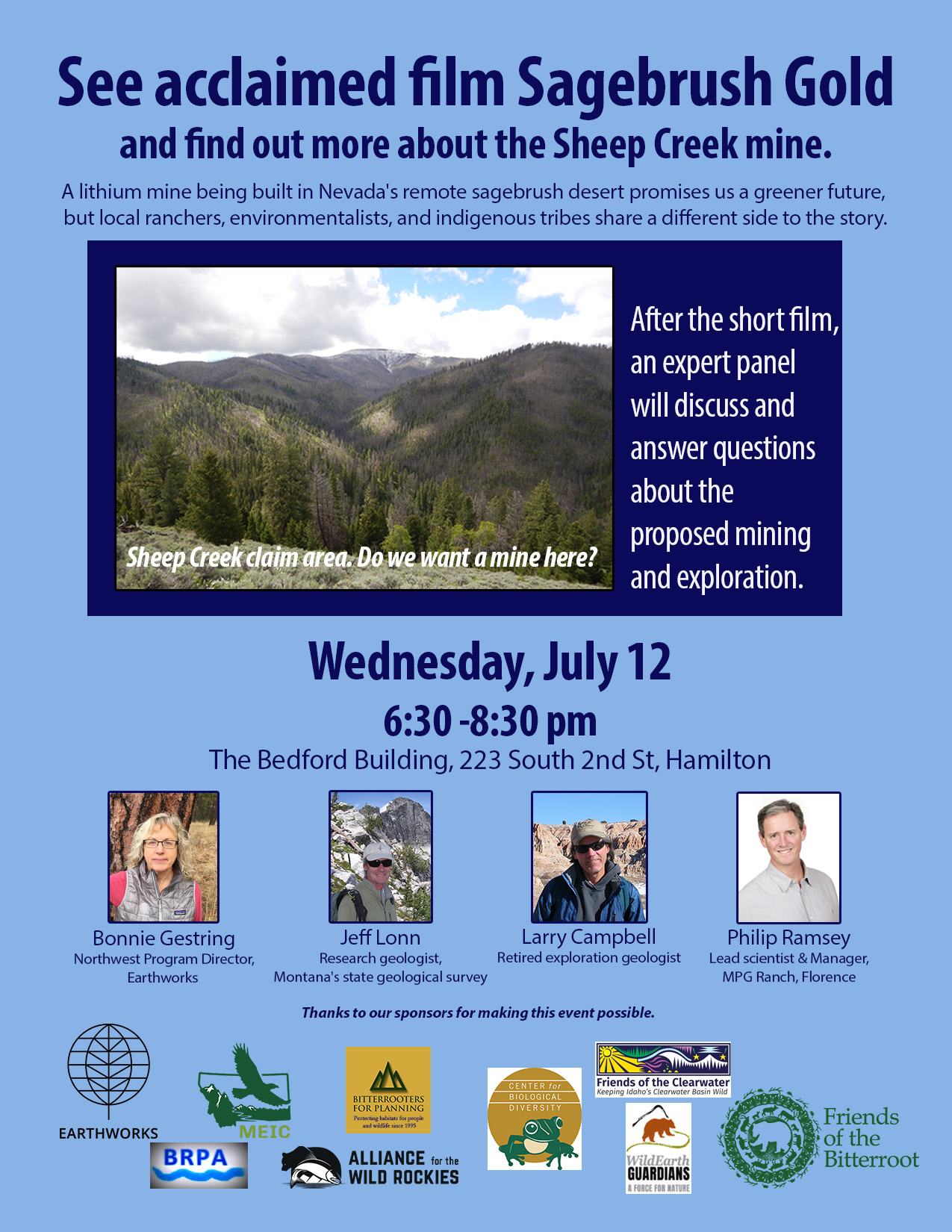
Let us know you will attend on facebook
More details on our expert panel. They will be available to answer questions after the short film.
- Bonnie Gestring is the Northwest Program Director at Earthworks, a national non-profit organization dedicated to protecting communities and the environment against the adverse impacts of mineral and energy development, while seeking sustainable solutions. Bonnie leads Earthworks’ efforts in Montana, Oregon, Idaho, Alaska and Washington. She is the author of numerous reports on hardrock mining, and she has been active in campaigns to protect clean water, fish and wildlife, and important ecosystems throughout the northwest U.S., including Alaska’s Bristol Bay, Montana’s Cabinet Mountains Wilderness, and Oregon’s Siskiyou Region.
- Jeff Lonn is a research geologist with Montana's state geological survey at Montana Tech. He has spent over 30 years mapping and studying the geology of western Montana, including extensive work in the Bitterroot region. He lives in Hamilton.
- Larry Campbell is a retired exploration geologist who has worked in every western state over the course of 45 years of living in the Bitterroot.
- Philip Ramsey is the lead scientist and general manager of MPG Ranch, a biological research station near Florence. He earned his doctorate for studies of how heavy metals from mine wastes influence the Clark Fork ecosystem. Phil is assisted by his wife, Bonny-Bleu, a local realtor concerned about how the mine would affect Montana's economy and land values.
Rare Earth mining at the headwaters of the Bitterroot
Is it worth the risk?
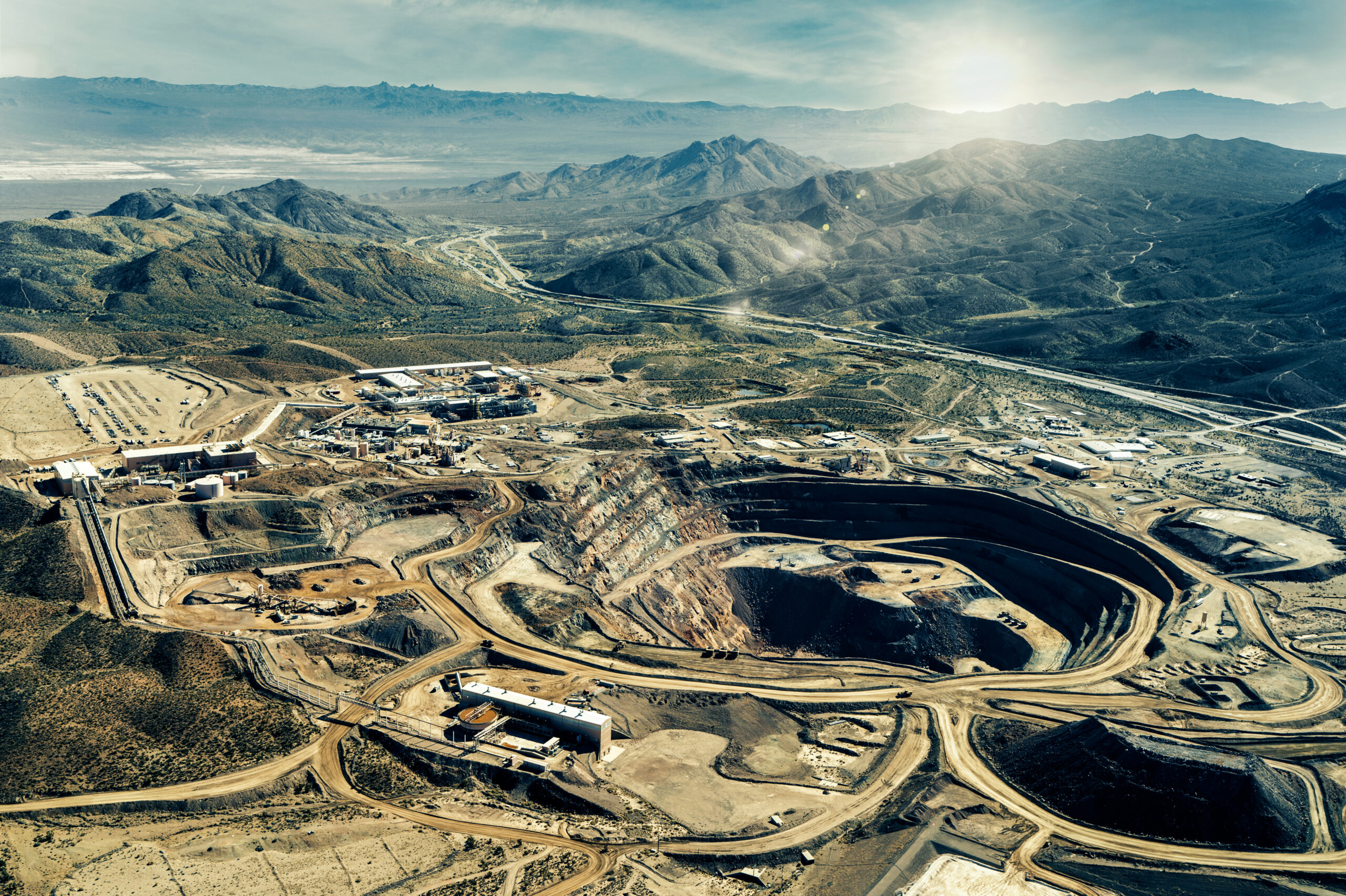
Mining and exploration for rare earth minerals can have devastating consequences. Photo courtesy of Creative Commons Attribution-Share Alike 4.0 International license and Tmy350.
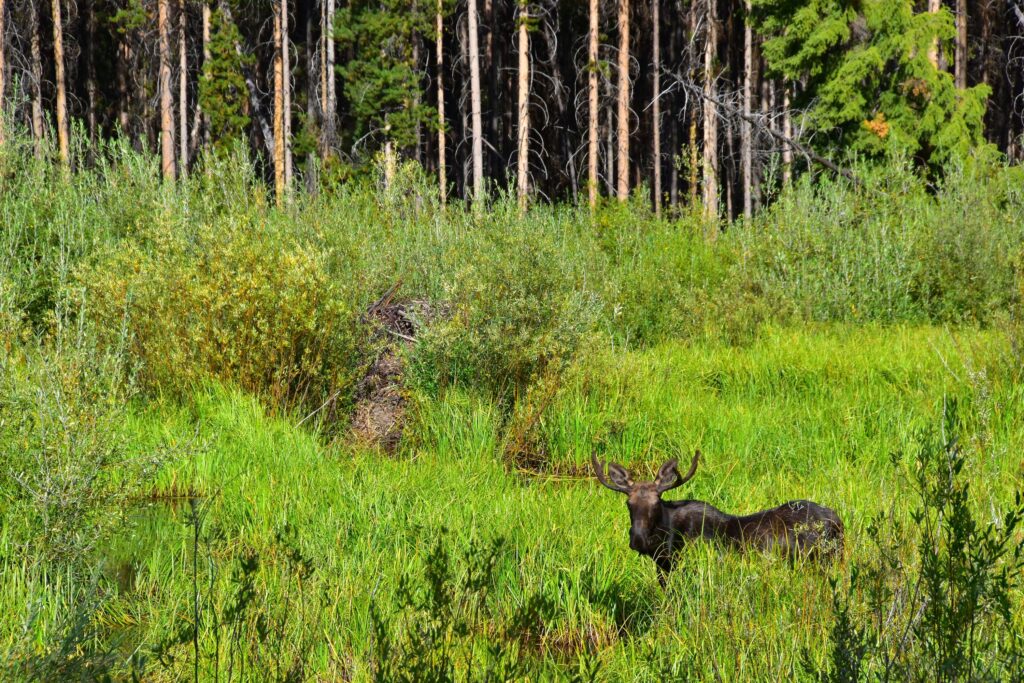
The Bitterroot National Forest proposes to remove almost all protections for old growth and wildlife with little analysis.
Old growth, coarse woody debris (CWD), and snags that wildlife like wolverine, bears, migratory birds, and eagles rely on will be changed dramatically on our forest with these extensive changes to the forest plan. The BNF proposes to make these changes with the minimal analysis of an environmental assessment and the finding that it will have no significant impact on our environment. Road densities will increase further fragmenting habitat. The relaxation of elk habitat and thermal cover restrictions will make it harder for animals to survive harsh winter temperatures. Old growth and mature forests will change dramatically reducing biodiversity and habitat quality. Please comment using the talking points listed below.
Comments are due Friday, March 3.
Suggested talking points
- The programmatic amendment will change the forest plan dramatically by removing strong protections for wildlife and old growth that exist in the current plan. The Bitterroot National Forest (BNF) is taking a short cut for a much overdue forest plan revision. Choosing this route will revise the forest plan without the extensive analysis required for a forest plan revision. To add insult to injury the BNF is using the minimal analysis of an Environmental Assessment instead of the thorough analysis of an Environmental Impact Statement.
- The old growth amendment would allow the forest to commercially log old growth as long as the Green et al minimum criteria is retained. Minimum criteria according to Green et al is 8, large, old trees and a minimum basal area including both small and large trees. But Green et al also states “The minimum criteria are used to determine if a stand is potentially old growth. Where these values are clearly exceeded, a stand will usually be old growth.” Retaining minimum criteria as stated in the amendment will allow logging projects to leave the minimum required for potential old growth not the “exceeded values” necessary for actual, functioning old growth.
- Coarse woody debris (CWD), snags, and decaying trees are part of the function of old growth and are vital to wildlife that rely on older forests. The diameter limits specified in the current forest plan require larger diameter CWD for old growth stands. These will be removed in the programmatic amendment. The guidelines offer protections for snags and dead top trees, but they are not as strong as current standards.
- Old growth and mature trees are necessary to sequester and store carbon. Not retaining all old growth and mature forests is in violation of Executive Order 14072 designed to retain carbon storage in our forests to mitigate climate change.
- EHE standards for road densities, hiding cover, and thermal cover have been a blanket protection for many wildlife species including endangered grizzly bears, lynx, and wolverine. Analysis to change these standards must include their effects on all wildlife and a replacement standard that equally protects wildlife must be proposed within the amendment. The replacement guidelines proposed are not strong and are riddled with loopholes.
- The amendment will allow for more road construction that will affect fisheries by creating sediment sources that impair streams. This will imperil endangered, native bull trout and westslope cutthroat trout.
- Coarse woody debris (CWD) and snag standards are essential to a host of wildlife that use them to hide, nest, and eat. They are also a source of food for countless pollinators essential for healthy crops. Most importantly, they break down and decay to become future soil, supporting healthy forests. The new guidelines do not specify diameters of coarse woody debris and would allow scores of little branches to suffice for downed logs that provide habitat and thermal protection for wildlife.
- Replacing standards with guidelines does not guarantee protections. Guidelines are not as strong as standards and the public has little recourse if they are breeched. The proposed weaker guidelines include loopholes to deteriorate protections even further.
- Reducing these standards will allow for much more logging and road building on the forest. In a changing climate, trees are worth more standing.
Submit comments here: https://cara.fs2c.usda.gov/Public//CommentInput?Project=57302
Or hand deliver or mail to Bitterroot National Forest 1801 North 1st Street, Hamilton, MT 59840
Or fax to 406-363-7159 include "comments on programmatic amendments" on cover page.
See the project here: https://www.fs.usda.gov/project/?project=57302
See the forest plan here: https://www.fs.usda.gov/detail/bitterroot/landmanagement/planning/?cid=stelprdb5292354
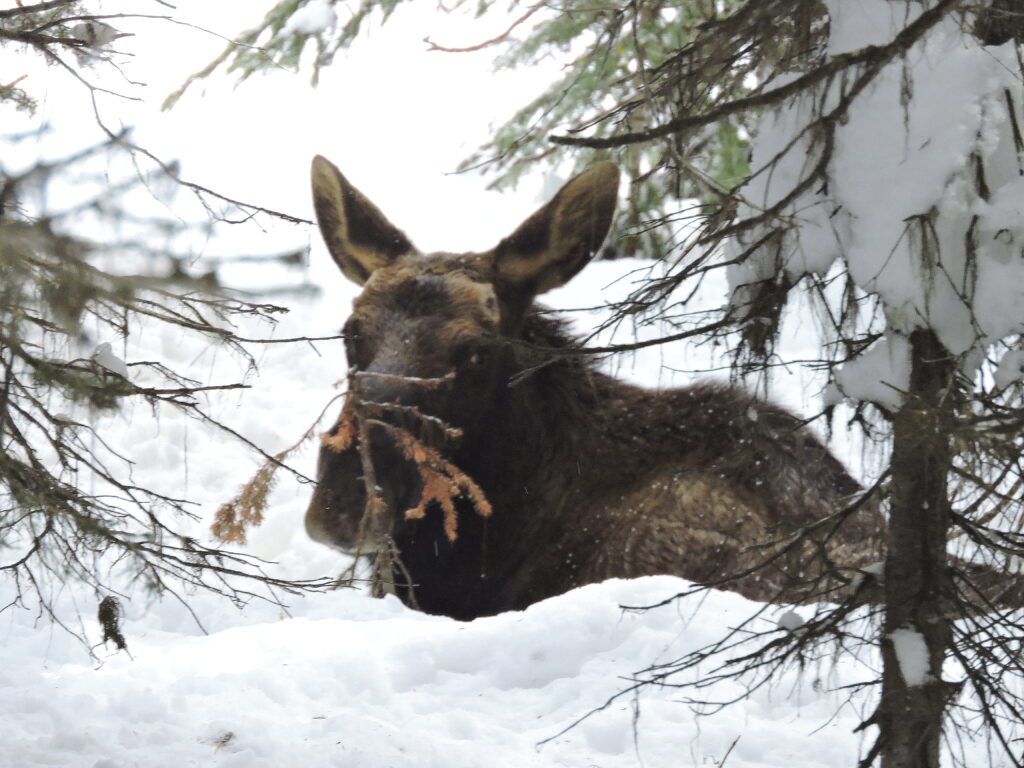
Thermal cover is essential to wildlife in Montana's harsh winters. Photo courtesy of Mike Hoyt.
________________________________________________________________________________________________
Help protect Anderson Mountain quiet users
Help Monitor Quiet-Recreation Infractions Near Anderson Mountain
At one time, Anderson Mountain was set aside for quiet recreation. Now excessive motorized traffic is spoiling quiet recreation.
Help monitor excessive over snow vehicle (OSV) traffic and how it affects winter quiet recreation. E-mail your experience to andersonmountainquietuse@gmail.com
Reports should include your name, the date, the time, and the location. If you have pictures, license plates, or names those are also helpful.
For more info, click the button below to go to our Anderson Mountain Page
Current use map for the area
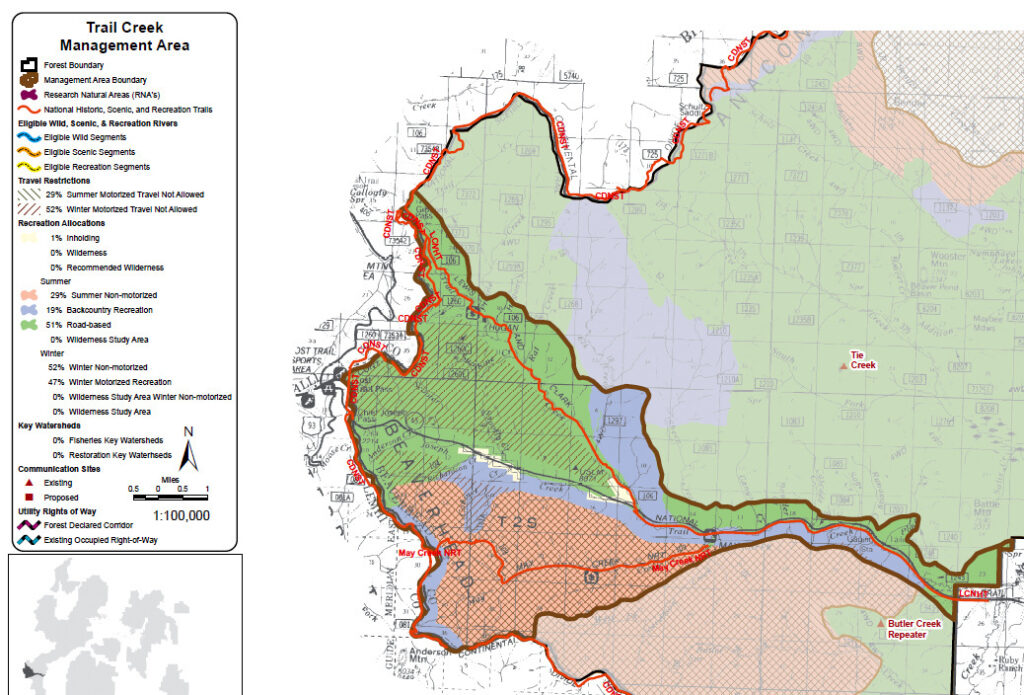
Mill Creek Lawless Logging
Click here for timeline, Friends of the Bitterroot report and a photo gallery
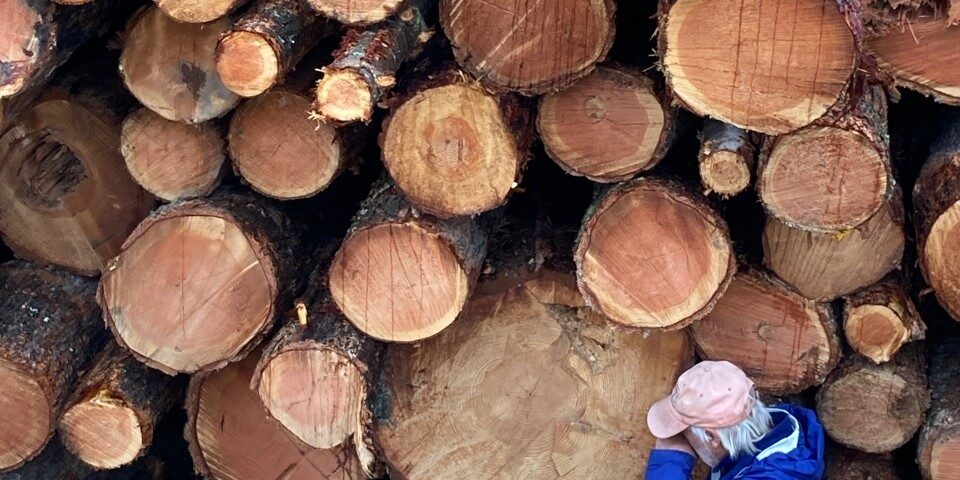
Logging large, fire resistant trees is not in the definition of a shaded fuel break.
_________________________________________________________________________
Holland Lake Lodge Comments Due October 6
Preserve this unique area of Montana
Comments can be submitted online to https://cara.fs2c.usda.gov/Public//CommentInput?Project=61746
Or mail to: U.S. Forest Service, Swan Lake Ranger District, Attn Shelli Mavor (Holland Lake Lodge) 200 Ranger Station Road Bigfork, MT 59911
Or Fax to: (406) 837-7522. Cover page needs to include “Comments for Holland Lake Lodge, Attn: Shelli Mavor.”
Suggested Talking Points:
The Holland Lake Lodge Expansion on public land will negatively affect the surrounding Bob Marshall Wilderness, recommended wilderness, and the Kootenay and Missions Mountains.
Increasing capacity threefold and making it a year-round resort will increase use in this area affecting many endangered and sensitive species including grizzly bears, Canada lynx, wolverine, and bull trout.
Allowing a large corporation to expand this small, family-oriented resort will prevent the majority of the public from affording a visit to this little rustic piece of Montana. How will the corporation pay for this extensive building expansion including a new water treatment plant and high-speed internet without raising the prices well beyond the reach of average salaries?
A large development that includes: a 13,000 square foot lodge, ten 650 square foot cabins, fifteen 250 square foot cabins, a 3,000 square foot restaurant, a 2000 square foot welcome center, a 2000 square foot maintenance building, and a 2000 square foot employee housing building is not appropriate for this area.
The scoping document proposes using a categorical exclusion (CE) to fast track this permit. CEs are meant for small improvements with little impact like a new outhouse or improving a boat dock. A large expansion that will affect endangered species and pristine Wilderness requires the thorough analysis of an Environmental Impact Statement (EIS).
Because of the sensitive nature of the area, only one expansion is allowed each decade. An assessment of existing facilities in the area should be included in documentation. Project analysis must include a full range of alternatives including one that would benefit the general public, not just a large corporation and its wealthy clientele.
Bitterroot Front Project and Conditions Based Analysis
An excellent assessment by Jeff Juel of Friends of the Clearwater
Are firebreaks 6 miles from fires in mid-September necessary?
Are the environmental risks justified? Are they considered?
We sent the following letter to the Forest Service on September 15, asking them to justify the cutting of large trees by mechanical means. Please join us by contacting the Bitterroot National Forest and asking a few pertinent questions about these firebreaks.
September 15
Bitterroot National Forest
We just received pictures (shown below) of the so-called fireline near the Mill Creek trailhead taken earlier today, September 15, 2022. They expose what appears to be a commercial logging operation, performed under the guise of fire protection, without any NEPA review. Mature trees are being felled and logs are being decked.
One picture shows an existing fireline along the nearby irrigation ditch which was constructed during the 2000 fires. Please explain why, instead of cutting a new fireline, the previously existing fireline was not used.
It was also reported that heavy equipment is driving on the adjacent private land without permission.
We measured the eastern perimeter of the Mill Lake fire to be located 6 miles west of this fireline (using Cal Topo and the InciWeb map). Below are the descriptions of the fire behavior from the past two days:
-
Sept 14, 2022, InciWeb update, Mill Lake fire: “There is little fire movement east, down the canyon.”
-
Sept 15, 2022, InciWeb update, Mill Lake fire: “Creeping and smoldering behavior.”
It is mid-September, and the weather forecast calls for cool, showery weather through the next 7 days. Given those conditions, the chance this fire could blow up and threaten any private land miles away is extremely unlikely.
Considering the current long-term weather forecast, how do you justify calling this fireline 6 miles from fire, under these weather conditions, and in mid-September necessary?
Here are fire updates from InciWeb since the letter was sent:
Sept 16 - The fires have not grown eastward down the canyons since Monday, September 12.
Sept 17 - Recent moisture and cooler temperatures should result in limited fire behavior today.
Sept 18 - Little or no down-canyon growth towards the valley is expected.
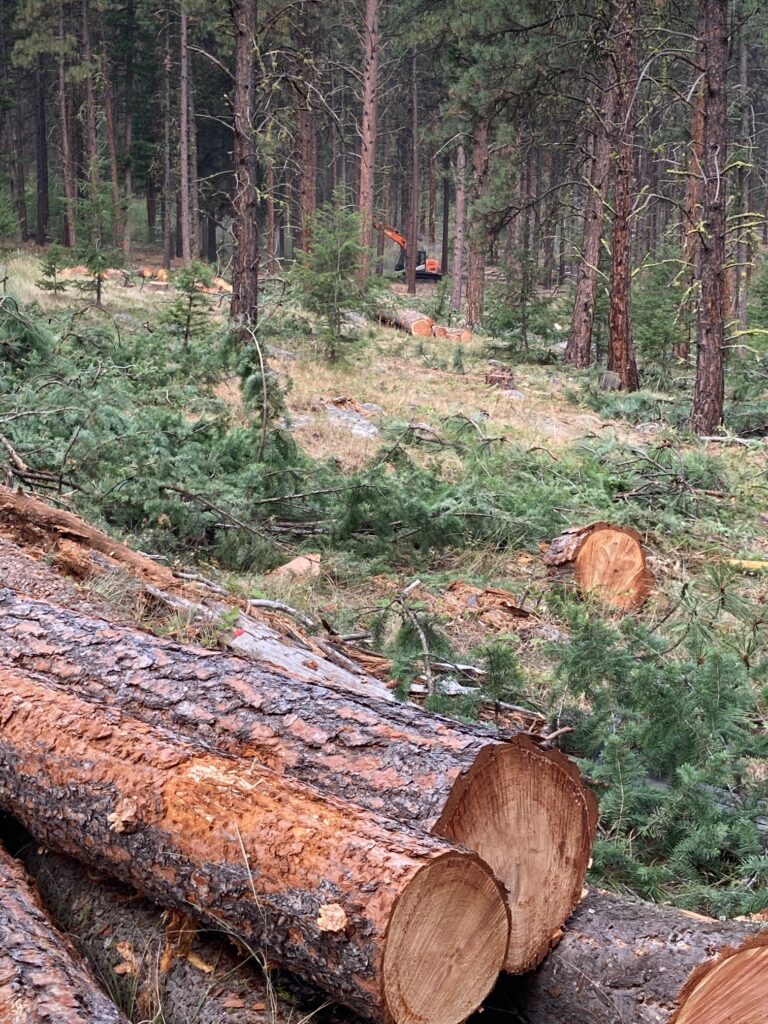
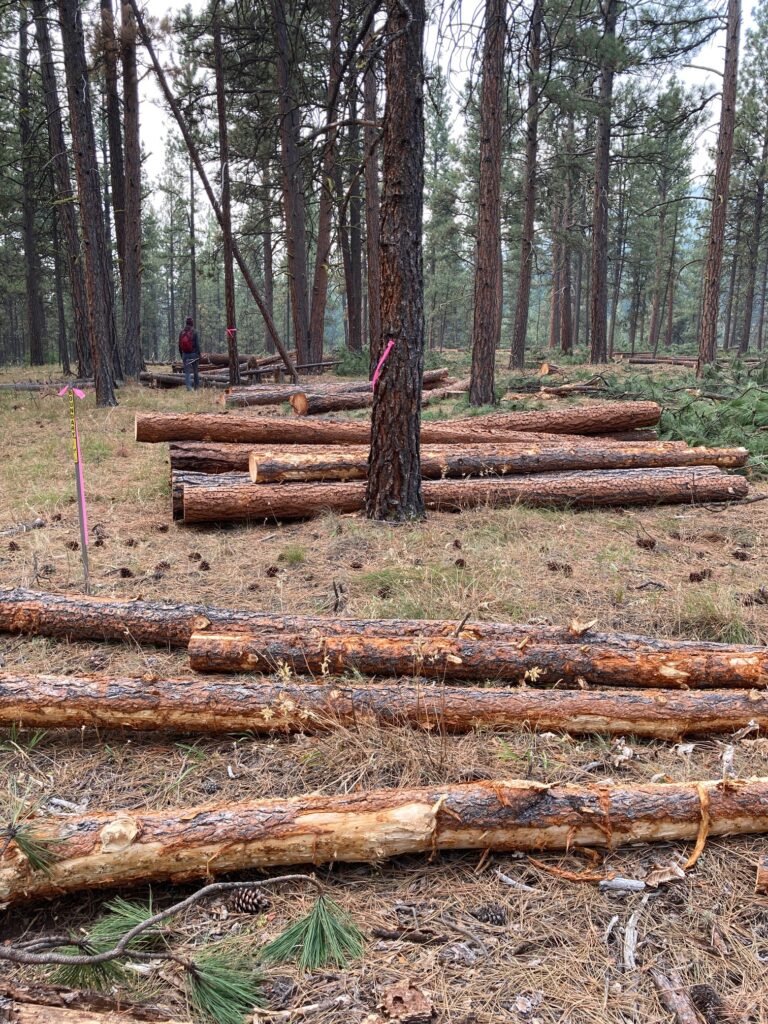
These look like large diameter trees and photos show little brush to be removed. Were these already shaded fuel breaks? Mechanical cutting and removal of trees compacts soil and promotes invasive weeds.
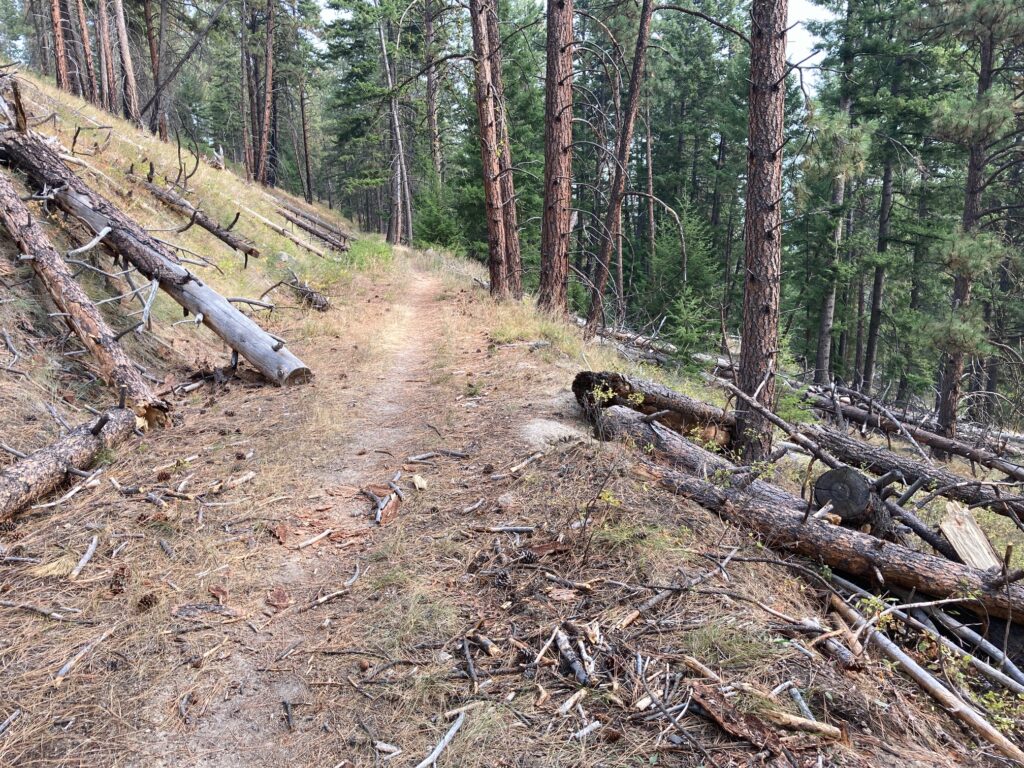
Photo of the 2000 fireline. Cleaning this fireline would be effective and cause less damage to drought stressed forest ecosystems.
Friends of the Bitterroot joins 8 other groups to sue on increased grazing in grizzly habitat.
Article in Counterpunch https://www.counterpunch.org/2022/09/12/lawsuit-aims-to-protect-grizzlies-from-expanded-livestock-grazing-in-montanas-paradise-valley/
USFWS drops its appeal. Wolverine will be protected as proposed under ESA while they reassess status.
https://missoulacurrent.com/wolverine-listing-decision/More Details in this story
Wolverine proposed for listing and ESA protections.
Friends of the Bitterroot is proud to have been one of many groups involved in this decision.
Wolverine will be considered for listing under the Endangered Species Act and will be officially proposed. No logging or mining can happen without consultation and careful consideration of direct, indirect and cumulative effects of activities on the recovery of the wolverine. We were honored to join many amazing environmental groups to protect this iconic animal. Great news for wildlife.
https://missoulacurrent.com/outdoors/2022/05/wolverine-listing-stands/
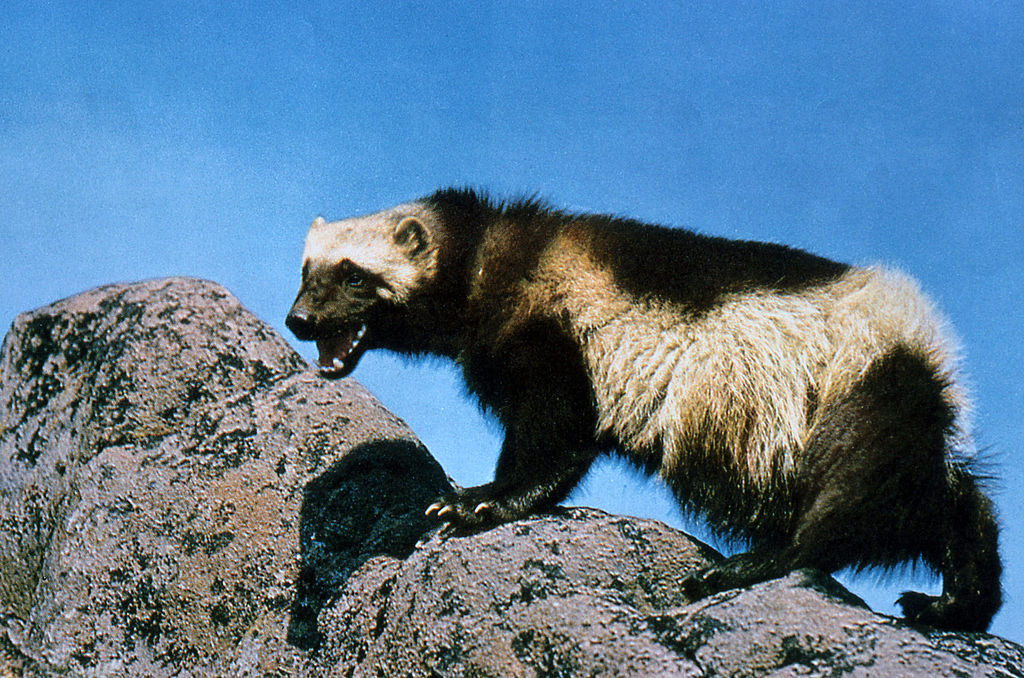
Conservation Groups Blast Bitterroot Front Project
A coalition of public interest conservation organizations is organizing to stop a huge timber sale proposed by the U.S. Forest Service for the Bitterroot National Forest. The Forest Service plans to cut trees off more than 55,000 acres (86 square miles) of national forest along the face of the Bitterroot Mountains west of the Bitterroot River in Montana. The Forest Service would also build an untold extent of new roads, likely dozens of miles, to access forest areas for clearcutting and other industrial logging, bringing industrial disturbance up to the boundary of the Selway-Bitterroot Wilderness.
The groups are Friends of the Bitterroot, Flathead Lolo Bitterroot Citizen Task Force, WildEarth Guardians, Montana Chapter of the Sierra Club, Native Ecosystems Council, Alliance for the Wild Rockies, Western Watersheds Project, Montana Ecosystems Defense Council, Gallatin Wildlife Association, Friends of the Clearwater, Wilderness Watch and Center for Biological Diversity.
Jim Miller, President of Friends of the Bitterroot states, “The Forest Service is proposing to log the entire Bitterroot front. Commercial logging in the mature forest far from homes has never done any good. Repeating the same mistakes cannot be the solution and only degrades the public lands we all value. Our community does not want the beautiful mountain and canyon vistas on the Bitterroot front scarred by more roads and clearcuts.”
The proposal also indicates the Forest Service wants to break commitments made to the public 35 years ago when the Bitterroot Forest Plan was adopted—commitments made to protect old-growth forests, wildlife habitat features such as snags, and elk habitat security. And 13,000 acres (over 20 square miles) of logging is proposed inside Inventoried Roadless Areas, degrading their roadless characteristics and reducing their eligibility to be recommended for wilderness when the BNF Forest Plan is revised in the coming years.
Jeff Juel of Friends of the Clearwater stated, “As usual, the Forest Service is pretending timber production isn’t driving this proposal, instead blaming the forest for ‘departure from natural disturbance patterns’ and ‘departure from historic fire regimes (which) has created forest stands characterized by high stem densities, hazardous fuels buildup, stressed tree conditions …with high susceptibility to uncharacteristic fire behavior and …at high risk to future insect outbreaks.’ They don’t say why such a forest malady allegedly exists on 144,000 acres or who’s responsible, even though they’ve supposedly been in charge for over a century.”
“The Forest Service is simply wrong that logging thousands of acres, including mature and old-growth forests, will mimic natural conditions or make people safe from wildfire, as they claim,” said Adam Rissien with WildEarth Guardians. “Managers cannot replace mother nature with a chainsaw, and the best way to protect communities from fire is to focus work in the immediate area around homes and structures,” he added. “Even though the agency would spend untold millions of dollars to subsidize timber production, it won’t invest a nickel to assist private landowners to learn and implement firewise protections for their homes and property, only offer ‘encouragement to take appropriate action on their lands’ ” Rissien concluded.
“As an organization which advocates for wildlife of southwest Montana, we are very disappointed to see the scope and magnitude of this project,” said Clint Nagel of Gallatin Wildlife Association. “We feel the project as proposed will have a significant and negative impact upon wildlife, not just in western Montana but also up and down the connectivity corridors of the northern Rockies. We know we can do better. We have to do better than this.”
“The impacts of the Bitterroot Front project would be vast,” said Jocelyn Leroux, Montana-Washington Director with Western Watersheds Project. “As currently proposed, the project will undoubtedly cause harm to the wildland ecosystems that native fish and wildlife such as bull trout, westslope cutthroat trout, big game, and grizzly bears depend on. A full, thoughtful analysis to provide a better path forward is required.”
“Now that grizzly bears have been confirmed in the Bitterroot Ecosystem, the Bitterroot National Forest is legally required to institute habitat protections with limitations on open roads, total roads and minimum amounts of secure habitat. The Forest Service must follow the law just like all Americans are required to do. The Forest Service must protect grizzly bear habitat instead of clearcutting it,” said Mike Garrity, Executive Director of the Alliance for the Wild Rockies.
The organizations’ comment letters can be accessed here.
Comment on the Bitterroot Front Project by May 20th
suggested talking points:
|
|
Use this link to submit comments: https://cara.fs2c.usda.gov/Public//CommentInput?Project=57341 Or send them by mail to: District Ranger Steve Brown, Stevensville Ranger District, 88 Main Street, Stevensville MT 59870 Or fax: 406-777-7423 |
The Bitterroot National Forest announces the largest commercial logging project since the clearcut crisis....
- 144,000 acre project area including Recommended Wilderness
- 55,000 acres of commercial logging
- Includes an undisclosed number of new logging roads
- Commercial logging in Inventoried Roadless Areas
- Includes an amendment to eliminate Elk Habitat protections
- Includes an amendment to reduce the definition of old growth stands to 8 large trees per acre, allowing commercial logging that leaves only 8 old growth trees per acre in a stand.
- Uses conditions based analysis that reduces timely public input and delays on the ground analysis until after project approval.
- And more
Help Protect Beaverhead-Deerlodge National Forest Wildlands
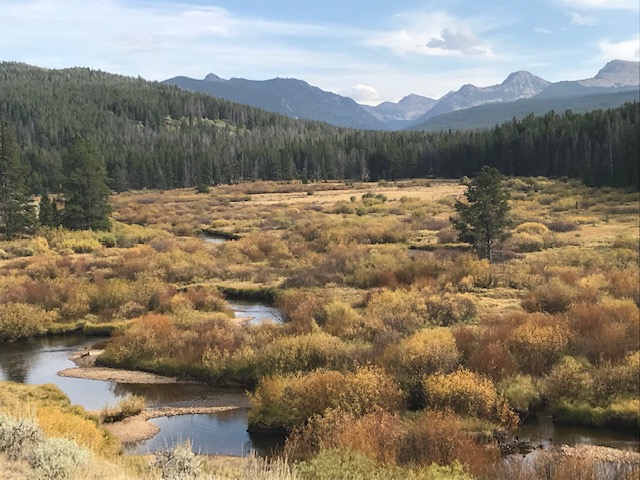
The Beaverhead-Deerlodge National Forest (BDNF) ia looking for comment on a proposed Outfitter and Guide Permit Authorization Environmental Assessment (EA)
|
The EA proposal overview |
|||
|
Citizens' Climbing Management Plan Proposed 2-22-2022
Friends of the Bitterroot joined 16 conservation groups to create a proposed Citizens' Climbing Management Plan to be used as an alternative in the NEPA process to create a climbing management plan on the Bitterroot National Forest.
After participating in meetings with climbers and BNF officials for over two years, this plan was developed by incorporating research into many other CMPs and climbing policies currently used by the Forest Service, National Park Service, Bureau of Land Management, and by States and Cities across the U.S.
Key elements include:
- An inventory of climbing routes
- An authorization system to install fixed anchors (climbing would not require authorization)
- An 800-meter (1/2 mile) seasonal buffer around raptor nests
- Education and outreach
- Protection of wilderness characteristics, cultural heritage, wildlife, and other resource values to ensure sustainability of climbing.
To see the plan, the letter signed by 16 organizations, and find out more about the history of the plan and climbing on the Bitterroot National Forest, click the button below.
Video on Climbing in the Bitterroots, its recent surge with sport climbing, and a Recommended Wilderness Area that was caught in the crossfire.
GOLD BUTTERFLY OBJECTION DUE JANUARY 18
Tuesday January 18, 2022
Even if you have not commented on the project, you can object to the new information. A reduction in old growth percentages to be protected and maintained on the forest, the new WUI definition, and the USFWS declaration that grizzly bears are not present in the project area.
Gold Butterfly Update December 17, 2021
Gold Butterfly Project, the largest in Bitterroot National Forest history, is up for objection. The objection period will span the holidays and Martin Luther King weekend.
The project includes 908 acres of clear cuts and allows commercial logging of old growth down to just 8 trees per acre. The roads to be built for the commercial logging are a threat to our fisheries. The project further fragments habitat for elk, bears, wolverine and countless species navigating climate change.
New report on 2021 Trail Creek Fire
The fire was used to log and sell 17,213 tons of saw timber and pulp. The firebreak was upwind and a long way from the fire. Even after the fire was deamed not a threat, logging along the Gibbons Pass Road (FR-1260). continued. Salvage logging (after the fire had burned the area) was also completed under the guise of firebreaks along the highway. All was done without environmental review. 8 miles of the firebreak was along, a popular winter ski trail.
Full Report Here
GOLD BUTTERFLY UPDATE Dec 6, 2021
We are expecting the new Gold Butterfly Decision to be published soon. The original decision was withdrawn thanks to a lawsuit filed by Friends of the Bitterroot and Alliance for the Wild Rockies. The Forest Service admitted it had been illegally logging old growth for over 26 years. Consequently, they published a supplemental study to change old growth standards. The new standards will allow logging in old growth leaving as few as 8 trees per acre. Imagine only 8 trees in an area the size of a football field.
The project detail page announced a new decision by December 1, so we expect it just before the holidays. This is a sad, “bah humbug” tactic of the forest service to conduct comment periods over the holidays. If you have a few moments while you enjoy friends and family and much needed repose, please check our website or watch for our alert. The more voices speaking up, the better.
MUD CREEK UPDATE
The Forest Wide Amendment for EHE objectives had been virtually abandoned and site specific amendments used. This seems to be a problem for Region 1 and the objection review process. The only changes on the website is a change in title for the EHE amendment to include Old Growth, CWD and Snag retention. And a proposed comment period beginning 12 1 2021. Yet another dump over the holidays.
Here is the new project page. The only thing that has changed is the title.
We received the objection review response. The Bitterroot National Forest must address a number of issues before moving forward.
Forest Wide Amendment to protect Grizzly Bears
Friends of the Bitterroot, Friends of the Clearwater and the Flathead, Lolo Bitterroot Task Force have sent notice the the Bitterroot National Forest requesting an amendment for grizzly bears.
Mud Creek update October 2021
Forest Service has extended their review of the objections until November 7th. Stay tuned.
Mud Creek update Sept 2021:
The objection meeting occured last week. The Forest Service plans to go full speed ahead with conditions based project planning that asks the public to accept text book analysis without revealing specific plans and without on the ground research. The first attempt at using this process was deemed illegal in court.
Plan continues to include:
- Commercial thinning in Old Growth to as low as 8 trees per acre
- Treating the Wilderness Study Areas and Inventoried Roadless Areas including bulldozing fire lines
- 22 or more openings (clearcuts) each up to 200 acres,
- Destroying important wildlife movement zones for lynx, wolverine, grizzly and elk
- Degrading bull trout habitat
- and more
Stay tuned: Decision notice is due on October 7th or November 7th if they choose to extend.
Announcing a new poster by local artist Karen Savory
Enjoy this lovely artwork and support wild lands.
Mud Creek Objection Due August 23
If you have written comments, you have standing to object to the project.
Don’t forget to e-mail your objections to appeals-northern-regional-office@usda.gov
Or mail them to Objection Reviewing Officer: USDA Forest Service . Northern Region 26 Fort Missoula Road , Missoula, MT 59804
Don’t forget to put Mud Creek Objection in the subject line or on the envelope.
Remember you must have commented to object. The talking points we sent were as follows:
- For such a large project that affects bull trout, the forest service should prepare an EIS that includes on the ground, site specific analysis.
- An official 60 day comment period should be announced for the 22 openings (clearcuts) from 40-200 acres. It should not start until June 1st when the public can access the focal areas specified for large openings.
- Protect Old Growth Standards as specified in the Forest Plan
- Preserve Elk Habitat Standards as specified in the Forest Plan. These standards limit roads that affect elk security. The area is already heavily roaded and elk in the area are below population objectives.
- Protect wildlife by not amending thermal cover and Coarse Woody Debris standards.
- Protect endangered and sensitive species like bull trout and lynx.
- Do not build new roads, reconstruct naturally decommissioned roads or build temporary roads in the already heavily roaded project area.
Speak up for Wolves, Otters, Beavers, Bears and your pets. Aug 20
Speak up for Wolves August 20 at the Fish and Wildlife Commission meeting. You can head to Helena State Capital Room 303 and speak in person or register to testify via zoom by Aug 19 at noon HERE Choose Wolf trapping and furbearer and setbacks and more if you like. The meeting is all day but wolf regulations will probably (it always varies) be midday. Here is the agenda without times: Watch live here on FWPs homepage to make sure you are in on the discussion.
We have done well so far. Montana Fish, Wildlife, and Parks reports receiving roughly 25,000 comments regarding the wolf proposals with the majority opposing the proposals designed to kill more wolves. Thank you to those who submitted personalized opposition to the wolf proposals.
Wolf hunting and trapping regulations suggested talking points:
- Require 24 hour trap checks.
- Prohibit the use of bait and night hunting of wolves.
- Prohibit the use of snares on public lands.
- Revise wolf trapping season dates to January 2 - Feb 28 to avoid incidental trapping of grizzlies, pregnant wolves, and upland game bird dogs.
- Limit the number of wolves who can be snared to one per certified trapper.
- Limit the number of snares and leghold traps a trapper can set.
- Prohibit power snares and the use of drags on traps and snares.
- Apply setback of minimum 150’ to all public roads for traps and snares.
- Require trapping warning signage at trailheads and high use recreational areas.
- Establish 1 wolf quota or closure of wolf season in units over elk management objectives, where elk shoulder seasons occur, or where chronic wasting disease has been detected.
- Maintain a maximum quota of 1 wolf in units adjacent to national parks. Any overage reduces the following year quotas.
- Allow 1 wolf per license.
- Require the reporting of all non-target catches.
- Require annual reimbursement reports (SB267) for wolf trapping and hunting.
Also comment on setbacks: FWP made a last-ditch effort requesting public comment regarding trap setbacks. These subjective setback proposals occurred after the June 24th trapping proposals meeting. Besides being disingenuous and dismissive to those of us personally involved in this year's FWP setback subcommittee, most noteworthy is what is proposed for Sanders County, which contains almost a million acres of public land i.e. to REMOVE trap setbacks.
If you want to chime in for beavers and otters… choose furbearer regs as well.
Otter proposal : Increase quotas from 28 to 40 in region 1 and from 25 to 40 in region 2. Increase individual trapper quota from 3 to 4
Suggested talking points
- Montana otter populations are based on harvest reports and anecdotal information.
- Montana has been declared in a state of emergency for drought. Temperatures are up and water is down statewide. Wildlife are struggling. Otters will be dying and should not be subjected to increased mortality through increased trapping.
- River otter are commonly caught in traps set for beaver. Trapping season on beaver runs 5 1/2 - 9 months out of the year. The incidental catches are not factored in and do not come off the next year’s quota.
Beavers: Proposal to continue unlimited trapping during seasons from 5-9 months of the year
Suggested talking points.
- Beaver are critical for water resources, wildlife habitat, agriculture, and fire mitigation.
- Please do not continue the unlimited and unreported trapping of beaver for 5 1/2 - 9 months out of the year in Montana.
- Require reporting of all beaver trapping.
- The Bitterroot National Forest plan states (p. II-20), “Beaver will be introduced into suitable riparian habitat.” How does unlimited trapping with no reporting requirements support this forest standard?
Protect Old Growth on the Gold Butterfly Project and the forest
Comments on Gold Butterfly SEIS due August 9th
Please comment on the Gold Butterfly Project Supplemental Environmental Impact Statement (SEIS). The proposed project specific amendment will allow old growth to be logged to only 8 trees per acre (approximately the size of a football field).
Talking points are listed below. Put them in your own words and let the forest know why you think old growth is important.
- Changing old growth standards should be done in a programmatic forest-wide amendment. The amendment and its affects across the forest should be fully analyzed through NEPA, not project by project. This amendment is currently being used on 3 projects, nearly 250 000 acres of the Bitterroot National Forest (BNF), nearly half of the forest not designated or proposed as Wilderness. BNF admits to illegally using the 8 tree old growth minimum for 26 years. This is not an excuse to continue using it without proper analysis.
- Old growth is more than just eight trees per acre. Old growth structure includes: rotten top trees, dying trees, and deadfall essential to wildlife dependent on mature forests. Commercial logging these areas will destroy habitat and permanently remove trees that cannot be replaced in a lifetime.
- The amendment would eliminate the 40 acre stand size requirement which has been used to protect up and coming areas of old growth and provides for connected habitat. There is nothing in the amendment that prevents BNF from protecting smaller areas of old growth, so there is no need for the change, unless they want to commercially log old growth to the bare minimum.
- The diameter limits in the forest plan might protect trees that are not quite old enough to be old growth. What is wrong with preserving large, old trees that will replace old growth trees that eventually die and decay?
- The modelling BNF is using can still be used to identify possible pockets of old growth, but it should not replace the standards identified in the Forest Plan and should not replace on the ground stand exams.
- The forest plan standards do not prevent BNF from preserving and protecting old growth on the forest. There is no need for the change.
Send Written Comments on the Gold Butterfly Supplemental Environmental Impact Statement to: Matt Anderson, Forest Supervisor Bitterroot National Forest, 1801 N First St Hamilton, MT 59840
Send Electronic Comments to: https://cara.ecosystem-management.org/Public//CommentInput?Project=59262
Comments Must Be Received: Midnight, Mountain Time on August 9, 2021

Don't miss the Premiere of
The Beast of Our Time: Climate Change & Grizzly Bears
with short presentation and Q&A
Wednesday, August 4, 7:00pm, MDT
Free and streaming on Facebook, Youtube, and SaveTheYellowstoneGrizzly.org.
You'll be able to submit your questions in the comment section on the Facebook and YouTube live streams. Our film participants experience on the grizzly conservation issue adds up to over 300 years. So come up with some great questions!
Here are direct links to the streams:Facebook Live Stream Link
https://www.facebook.com/savetheyellowstonegrizzly/live_videos/ YouTube Live Stream Link https://www.youtube.com/watch?v=P1nzPluU4JY
The 28-minute documentary is an unflinching inquiry into the relationship between climate change and grizzly bears. The film is narrated by Academy Award winner Jeff Bridges and is scored by pianist Bill Payne of Little Feat.
Protectwolves, bears, beavers, otters and petsComments due July 26 by 5pmPlease comment on the new trapping laws. Talking points below. For each title you must send a new e-mail with the subject in the tagline: like beavers…wolves… etc. |
 |
|
send your public comment to the Montana Fish and Wildlife Commission: Email: FWcomm@mt.gov You are welcome to use the talking points below, but please put them in your own words and describe how these trapping regulations will affect you personally. Do you like hearing wolves howl? Do you walk your dog in an area where trapping occurs? Wolf trapping/hunting proposals: suggested talking points
Otter proposal : Increase quotas from 28 to 40 in region 1 and from 25 to 40 in region 2. Increase individual trapper quota from 3 to 4 Suggested talking points and watch this great video for motivation.
Beavers: Proposal to continue unlimited trapping during seasons from 5-9 months of the year Suggested talking points.
Coming soonGold Butterfly SEIS comments due August 9Mud Creek objections due August 23.We will send out an alert with talking points soon. |
Virtual report on grizzly denning habitat in the Bitterroot and its affect on the Eastside Project
Tuesday June 8, 2021
12pm MDT
Hear Michael Hoyt of Friends of the Bitterroot, Katie Bodileau of Friends of the Clearwater, Josh Osher of Western Watersheds, and Adam Rissien of WildEarth Guardians talk about the importance of this report to connectivity in the Bitterroot.
Eastside Project Comments Due June 10
Suggested Talking Points:
- The 2 page scoping document and low resolution maps for this 400,000 acre project spanning several years do not provide enough information to the public. Please supply more specific information and analyisis in an Environmental Impact Statement (EIS) and restart the comment period.
- Scoping document implies that this project is part of a long-term rotational burning project which has not been analyzed under NEPA.
- Project will affect lynx habitat and surrounding areas that are essential to the survival of the species in a changing climate.
- Project will affect grizzly connectivity zones and denning habitat essential to the genetic vigor and long-term survival of grizzly bears.
- Project could affect old growth and might not be in compliance with the Forest Plan
- The categorical exclusion allows for the reopening of overgrown and naturally reclaimed roads. Please specify which roads will be reopened and describe how they will affect elk habitat, bull trout, and fisheries.
- Wolverine are present in the area. Please analyze affects on wolverine habitat and inventory suitable habitat.
- Many natural springs are present in the area. Please provide a map of these areas and discuss proposed actions that might affect them.
- Please analyze the affects of project activities on boreal toads and other species of concern.
- Please stay out of Inventoried Roadless Areas and the Sapphire Wilderness Study Area.
Submit comments HERE
Ore send them to:
Steve Brown District Ranger
Bitterroot National Forest
Stevensville Ranger District
Attn: Eastside Forest & Habitat Improvement Project
88 Main Street
Stevensville, MT 59870
Comments should include: 1) name, address, phone number, and organization represented, if any; 2) title of
project on which the comment is being submitted; and 3) specific facts and supporting information for the
responsible official to consider.
Comments may also be hand delivered weekdays 8:00 am - 4:30 pm to the same address.
_________________________________________________________________________
First Climbing Management Meeting for the Bitterroot National Forest
Discussion will be about the process of creating a climbing management plan and how to protect raptors.
Virtual Meeting
Wednesday, June 2
5:30-7:30 pm
A Climbing policy in the Bitterroot requiring authorization of new routes would protect wildlife and sacred places. It would keep this from happening here.
Thanks for commenting on Mud Creek
80% of comments were opposed to the project
Calf Creek Timber Sale Comments due April 30
Fish Wildlife and Parks is proposing re-blading roads in Calf Creek and cutting much of the remaining timber. We would like to instead see a comprehensive weed management program with bio-controls and a trail maintenance program.
The new comment deadline is proposed for April 30th
A field trip is planned for April 16th at 10 am
We will post more info when it becomes available from FWP
Here are a few links for more info:
Open House on Mud Creek Tonight Monday April 6 2021 at 6pm
Mud Creek EA is out
Comments due April 20th... watch for alerts with talking points
Here is the link to the request for comments
Here is the link to the Forest Plan amendments they must make to complete this over the top project: old growth (allowing for commercial treatment leaving only 8 trees per acre on average), elk habitat objectives (allowing more roads in a heavily roaded area), thermal cover(necessary for wildlife), coarse woody debris (future soil), Openings over 40 acres (they are proposing 22 areas of openings from 40-200 acres.)
This is a conditions based analysis which means no specific information or analysis on the ground. We are not sure what all they will do on 44,832 acres treating 21 square miles with many clear cuts up to 200 acres, new roads, ATV loops, and commercial logging in old growth. Watch out bull trout, lynx, wolverine and grizzly bears! The EA reads more like a forest plan. It completely re-writes the forest plan by amending old growth standards, elk habitat effectiveness, coarse woody debris, thermal cover, and common sense.
How is it possible not to do a full EIS analysis of this? How is it possible that 21 square miles of commercial logging will not make a significant impact?
Piquett Creek EA
Bitterroot National Forest has published the implementation plan and the project is up for bid. Meanwhile the public just heard of what they planned on the ground a month ago. This is the problem with Conditions based. There is no true on the ground analysis of specific actions.
This 5000 acre project borders the 44,832 acre Mud Creek Project. And affects Bull trout.
They promise that there will be no more than 500 truckloads which is 1000 passes by bull trout streams. That is only the logging trucks, not administrators, road builders, and equipment.
Gold Butterfly is Back!
The Bitterroot National Forest is preparing an SEIS to basically make their illegal treatment of Old Growth legal. They want to commercially log old growth to the minimum 8 trees per acre for Ponderosas. Please protect our old growth and stay on top of this Project.
Here is the Federal Register Link to the SEIS announcement
And watch out for MUD CREEK and PIQUETT CREEK CE
Two connected projects spanning nearly 50,000 acres. Mud Creek will ask for amendments to old growth and Elk habitat protections in the Forest Plan.
Here is the latest announcement on Mud Creek
Please stay on alert for these three projects.
Gold Butterfly Project Dropped
For now the Bitterroot National Forest has withdrawn Gold Butterfly
We are happy to report that the Bitterroot National Forest has withdrawn the largest commercial timber sale since the clearcut crisis. This sale threatened old growth, included large clear cuts and added more roads to degrade and dump sediment into our rivers and streams. We are doing our best to make sure the forest protects our resources.
Read more:
Article in the Bitterroot Star
Article in CounterPunch
Article in the Missoulian
Friends of the Bitterroot
and Alliance for the Wild Rockies
have filed a complaint with the Forest Service on Gold Butterfly.
We have also given 60 notice to file suit to the US Fish and Wildlife Service concerning affected endangered species on the Gold Butterfly Project.
Friends of the Bitterroot
filed a complaint against Darby Lumber Lands II timber sale 2/19/2020
After over a decade of attending field trips making comments and asking for changes to projects in order to uphold the Forest Plan, protect wildlife habitat, and preserve fisheries, we have no other recourse but to file a lawsuit against the Darby Lumber Land timber sale
See the Ravalli Republic Article (Please show your support by clicking the smiley face)
See the Missoula Current Article
See the issues below...
The Montana Climate Council is pushing for industrial status quo
Instead of real climate solutions
We have not heard from the Council since draft comments were due.
We will keep you posted on the latest news
As soon as we hear anything

We have the chance to harness the sun and use it to reduce carbon from burning fossil fuels. Instead the Governor's Climate Council is calling for support of industry status quo. Please ask for clean energy solutions and support for a clean energy economy in Montana.
Photo by Bruno Scramgnon from Pexels
Comments may be submitted by email to ClimateCouncil@mt.gov
or by mail to Montana DEQ c/o Rebecca Harbage/Director's Office, P.O. Box 200901, Helena, MT 59620-0901.
Comments submitted will be made public along with the names of the commenters.
Suggested Talking Points
There are a lot of talking points because the plan is extensive. Please choose the points you feel strongly about and write them in your own words. Thanks so much for taking a moment for the planet in this uncertain time.
- The Governor appointed Climate Council does not speak for or represent Montana. Recommendations should hold no more weight than public comment. The ideas formulated by the group should be treated as one voice just like form letters generated from non-profits.
- Climate Council recommendations should not supersede the best available science. The Montana Climate Solutions Plan alarmingly states that, “sound science and information alone are insufficient to effectively manage climate-related risks” instead it seeks to respond “to the needs of government agencies, tribal nations, land managers, business owners, non-profits, and individuals” (page 3 Montana Climate Solutions Plan MCSP). Economic needs of current industry should not take precedence over sound science and economic predictions.
- Implementing statewide building codes that require energy efficiency as recommended on p. 9 is a great idea. Please also encourage electricity conservation by implementing a structure that increases rates with increasing use.
- Thanks for recommending low emission standards for vehicles, you should also implement more stringent mileage standards and reduce speed limits.
- Thank you for recommending an increase in the allowable size for solar generating systems. Solar electricity is good for everybody (except Northwestern Energy’s stockholders and executives), and should be encouraged as much as possible.
- The Council’s goal to achieve net greenhouse gas neutrality is essential, but your recommendations do not reflect this goal. What about promoting rooftop solar by offering stronger tax incentives and retain the current net metering program. If the basic service charge is inadequate, an increase for all customers to cover that cost is in order.
- The current economy must change in reaction to climate change. Council membership is heavily weighted towards status quo economic concerns and very light on scientists and economists. The result is the council emphasizes maintaining and increasing natural resource extraction (agriculture, logging, and mining) rather than helping the economy adapt to changing demands and climate change.
- Under “Guiding Principles for Effective Climate Adaption” the document states, “Montana agencies, communities and stakeholders should approach climate change and its impacts with an understanding of the state’s geography, culture, history, economy, and resources.” The document is resisting change when change is exactly what is needed to reduce global warming and mitigate its impact on Montana’s citizens.
- The plan moves decision-making from fact to “feelings and beliefs” in a recommendation stating, “Prioritize and conduct research with University Social Scientists to better understand the climate information needs of agricultural producers, forest land managers, tourism and recreation businesses, state, local and tribal governments and other stakeholders in Montana.”
- The council should eliminate coal-fired electricity generation in Montana, provide job training, and support green energy solutions to diversify changing local economies.
- Please remove any consideration of biofuels which have been shown to emit more carbon than coal when the entire production and transportation process involved is considered.
- Logging/deforestation has been found by many studies to produce more atmospheric carbon than almost any other activity, including wildfire. Yet on p. 6, Council recommends implementing “active management across ownership boundaries to reduce wildfire risks and sustain watershed functions as identified in Montana’s updated Forest Action Plan”. You need to back up this recommendation with recent science. The Forest Action Plan is still to be seen and created by another politically appointed, industry heavy collaborative.
- The “active forest management” recommended by the Council should be restricted to the areas immediately surrounding homes, which is supported by science.
- On p. 7-8, you recommend building “resilience” of forests, rangelands, wildlife, and “working landscapes”. Resilience is a buzzword used to justify deforestation. A better approach would be to promote adaptation to a new climate. And, while producing some wood products will always be a necessity, science makes it clear that their production does not enhance carbon storage.
- The livestock industry steals huge amounts of water from streams that are warming and drying up. Grazing degrades riparian areas and spreads cheatgrass that increases wildfire risk. Please promote measures that allow buyouts of grazing allotments and retirement of irrigation rights to boost streamflow. This will protect fisheries and tourism.
- It is not enough to “ensure that local governments have access to updated information…on floodplains and wildfire-prone areas” (p. 4). Good zoning regulations can prevent houses from burning or flooding.
- Carbon capture is probably the most expensive way to reduce atmospheric carbon and will encourage the continued consumption of fossil fuels. It is only one small tool and should not supersede more productive long-term changes.
- The reaction to Covid-has drastically reduced the worlds carbon footprint. If we and our governments pay attention, a lot can be learned about how Montana can and should deal with the effects of climate change.
- Other ideas not considered in the recommendations:
- Encourage families to have less children. This could be accomplished by eliminating tax exemptions for children beyond two with a goal of zero population growth.
- Remove or decrease subsidies for resource extraction to bolster the cleaner economies that are developing.
- Encouraging remote work where possible (telecommuting) reduces fossil fuel use.
- Promoting education on the best available science on climate change to all residents.
- Eat less meat or none at all.
- Grow food using less fertilizer and fossil fuels.
- Mow lawns less often and do not use fertilizers or herbicides.
- Governments at all levels should provide incentives and education to move the dominant culture away from consumption for the sake of consumption.
Bitterroot Front Project
Largest Timber Project in the Bitterroot scroll down for talking points
See Story on European Wilderness Society Website
What do those historical pictures of the forest mean and what does it mean to force a return to "historical conditions" in the Bitterroot. Here is a great explanation by Keith Hammer of the Swan View Coalition
See Story by Jon Haber in the Smokey Wire
150,000 Acre "Project" on the Bitterroot
November 21, 2019
See Story on Conditions Based Court Injunction in Prince of Wales
Court Enjoins Logging Using “Condition-Based Analysis”
September 23, 2019
Forest Supervisor Addresses Confusion over Bitterroot Front Project:
November 19, 2019
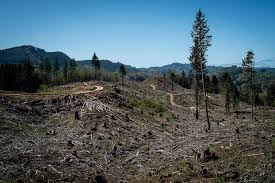
The Bitterroot National Forest is proposing the largest ever timber sale on the Bitterroot. The project area encompasses 150,000 acres stretching from Connor to Lolo on the valley’s westside. In fact, the project area runs right to the Wilderness boundary and thus includes protected areas like recommended wilderness, research natural areas, and inventoried roadless areas.
The main focus of the meetings is fire safety. But there is a lot of fire science that goes against the Forest Service Narrative. See More Fire Information
The Front Project is the creation of new Bitterroot National Forest BNF Supervisor Matt Anderson who recently arrived from the Tongass National Forest in Alaska. “This landscape just screams risk” said Matt Anderson, citing extreme fire risk and fuels build up as the reasoning behind this mammoth logging project. However, this flies in the face of veteran BNF officials like Sara Grove (recently retired) who said of the recent Westside Project (Lost Horse to Roaring Lion), “I think as far as larger projects go, that would kind of fill in treatment of WUI (wildland urban interface)” on our valley’s westside (Ravalli Republic, July 17, 2015). Multiple forest officials were quoted in Ravalli Republic articles stating the Westside Project was the last remaining section of the WUI that needed to be treated on the valley’s westside.
New roads will be built adding to a road system with a backlog of maintenance and sediment issues affecting our fisheries and crystal clear rivers. See Roads for more info.
The BNF is currently hosting meetings to obtain public input. Very few specifics have been disclosed by the Forest Service on this project. In fact, it is a likely the agency will attempt to use a questionably legal review and analysis where on-the-ground actions will only be disclosed to the public AFTER a decision has been made. This was attempted on the Tongass and is currently under an injunction and in the courts because of insufficient site-specific project information provided to the public. This constitutes a blank check signed by the tax payers and the forests and wildlife that live in our midst.
TALKING POINTS:
Size
- The 150,000 acre project area should be drastically reduced, eliminating all proposed Wilderness areas and roadless areas.
Process
- A regular NEPA process should occur. Proposed analysis will not reveal on the ground actions until AFTER a decision has been made. This is not transparent and does not allow for meaningful public comment.
- Will the Bitterroot National Forest actually consider values expressed by local concerned citizens or will the Forest Service step in line with top down mandates from Washington DC?
Wildfire
- Commercial thinning projects DO NOT prevent fires in extreme conditions. Commercial thinning can exacerbate and increase the intensity of fires by opening the forest, drying it out, and allowing wind to rage through carrying fire.
- Insist that the Forest Service apply no treatments further than 1/4 mile from homes. This is consistent with research from fire researcher Jack Cohen and is the most effective and economical way to protect communities.
- Educate the public about fire prevention in the HIZ (Home Ignition Zone) as this is a proven way to help reduce fire risk.
- Educate the public about the need to allow wildfire on the landscape as is specified in the Forest Plan. It works to restore forests to a more natural and complete system.
- Stay out of any areas that have burned in the last 25 years or only hand thin in these areas.
Manage Roads to reduce sediment and protect fisheries and wildlife
- No new road building or reconstruction of undetermined roads. They fragment wildlife habitat and impede natural water drainage.
- Decommission unnecessary roads to avoid road failures, reduce sediment in streams, and create a more sustainable road system.
- Current roads should be brought up to standards, budget should be secured for long term maintenance to prevent sediment runoff and allow public access.
- Who will pay for the log haul damage to County Roads?
Protected areas should be removed from the project area
- Stay out of Proposed Wilderness Management Areas (MA6).
- Stay out of the Inventoried Roadless Areas, or hand thin (similar to Canyon Creek Project) only where it borders private homes.
- Stay out of riparian areas. Uphold riparian area restrictions: no commercial logging, roads or soil disturbance in riparian areas.
- Stay out of Semi-primitive Recreation Areas (MA5).
- Stay out of Research Natural Areas (MA9).
Old Growth
- No logging of Old Growth or trees over 12" diameter to protect wildlife habitat and carbon sequestration.
- Old growth is important habitat for our dwindling population of song birds.
Wildlife
- No clearcuts— they destroy precious habitat, are ecologically damaging, unsightly, and strongly opposed by the public.
- Do not log or build roads in habitat for lynx, grizzly bear, wolverine, bull trout, fisher and all other sensitive and endangered animal and plant species.
Climate Change
- Protected intact forests help buffer communities against the impacts of climate change.
- Given demonstrated regeneration failures after logging and fires, is resumption of the long discredited and unpopular practice of clearcutting wise in this time of rapid climate change?
- Stay out of the Keeling Climate Research Area. This continues to provide vital climate data.
- Clearcuts and tree plantations increase flooding and landslides in the wet months and decrease stream flows in dry climate conditions.
Forest Resilience
- Insects and disease are a natural part of a healthy forest. They select for more resilient trees. Let these natural agents work to restore the forest to a more natural, complete system.
Economics
- What will this cost taxpayers?
For more info on issues affecting our forest
click links below
Why did the Forest Service Cut Down a 565 year old tree?
A plea to protect Old Growth
See the Story in the Bitterroot Star
Darby Lumber Lands
Phase Two
Commercial Logging in Elk Winter Range
Large Clear Cuts
Illegal roads in areas reserved for Elk Winter Range
Don't Let the Bitterroot National Forest
Destroy Another Refuge for Elk and other Wildlife
Darby Lumber Lands 2 Project
The Issues
- Large Clear Cuts: Darby Lumber Lands 2 (DLL2) includes a 100 acre and a 39 acre clearcut. Clearcuts over 40 acres require 60 days of public comment. The DLL2 EA allows only 30 days. The two main purposes for these clearcuts are inconsistent with recent science and go against current forest service procedural manuals. Here are some articles discussing the Benefits of Mistletoe for the forest: http://rspb.royalsocietypublishing.org/content/279/1743/3853, Lack of regeneration in cleared areas due to climate change: https://www.eurekalert.org/pub_releases/2017-12/tuom-sfr121317.php Forest manuals recommend treating mistletoe ONLY when the focus is timber production. DLL2 is dominated by land preserved for Elk Winter Range: https://ufei.calpoly.edu/ForesTree/files/collected/dougfirdm.pdf Remedy: No clear cuts bigger than 20 acres and consider mistletoe treatment alternatives like creating islands etc.
- Forest Plan (FP) standards cannot be met by the proposed project prompting the FS to make multiple amendments to the Forest Plan due to damaging proposed “treatments” and overreach. Site-specific Forest Plan amendments are meant to address unique characteristics of a particular forest area, not conditions that are common throughout an entire forest or region. Due to widespread excessive road density on suitable timberlands, the BNF has used “site specific Forest Plan amendments” that wave the Elk Habitat Effectiveness (EHE) legal limitations for road density on 226,119 acres of BNF’s total of 389,820 acres suitable timberland (FP, p. III-2) in the last 12 years. EHE protects habitat for grizzly, lynx, wolverine, fisher et al. Modifying it to address only elk does not serve the purpose of the standard. Remedy: Adhere to EHE standards in the Forest Plan
- Economically unrealistic haul route: Hauling 20+ miles out of a Rye Creek just to reach Hwy 93 will be extremely costly to taxpayers, damaging to forest roads, and detrimental to nearby streams and to the quality of life of those homeowners living along the haul route. The FS fails to provide economic an analysis in the Environmental Assessment (EA), thus hiding the exorbitant costs. Remedy: Be more fiscally responsible and do controlled burns and moderate hand thinning in these areas to create a more resilient forest.
- The EA has insufficient environmental analysis for the project (soils, water, wildlife, etc) failure to use most recent, best available science to support their proposed actions/treatments & absent/lacking measurement indicators to demonstrate before and after net benefits of proposed treatments to support their effectiveness and validity. Remedy: Spend more time on analysis especially considering alternative methods to reach desired results. Analyze alternative specified road locations in MA2 rather than in MA8b.
- The project would force elk and other big game onto private lands, reducing hunting opportunities and affecting private landowners. Area is an island of un-roaded forest amidst disturbance by fire and heavy logging by Darby Lumber Lands. Remedy: Protect Elk Habitat by not logging in MA8b, and not clearcutting. Consider cutting only trees less than 16 inches in diameter. Consider not creating loop ATV routes in the area.
- The project unlawfully includes road building in a management area (MA8b) that contradicts the Forest Plan that directs lawful management of the area as Elk Winter Range More broadly, DLL2 is an island of mature forest, relatively intact ecologically, amidst a sea of over-logged and burned forest lands that should be left “as is” or only minimally managed or altered by the FS. As discussed in the Forest Plan, the area was identified as prime elk habitat and is meant to be managed primarily to protect that premium value. Remedy: NO logging or road building in MA8b. Analyze alternative specified road locations in MA2 rather than in MA8b.
- In an area with streams officially recognized as having impaired water quality not meeting Clean Water Act standards due to excessive sediments from roads the project proposes more road building at great taxpayer expense and to the detriment of water, fisheries, soils, wildlife. Remedy: Fix the existing roads without adding roads, skid roads, or temporary roads in the area.
- The project’s Purpose and Need are flawed and inconsistent with proposed treatments –the forest involved is mostly composed of widely spaced trees, and combined with the surrounding lands from the fires of 2000 presents low fire risk, contrary to FS claims. Remedy: Consider treatment of prescribed burning instead of thinning and clearcutting.
- Ignoring overriding issue of climate change and actually exacerbating its impact on our Forest. Remedy: Analyze current science concerning thinning and its relationship with beetles, fires, and disease. Preserve trees for carbon sequestration rather than sell them at taxpayer expense.
- ATV connector route in Lynx habitat. Remedy: Move the connector route or consider other loop routes outside of Lynx habitat.
- ATV routes in DLL2 were poorly built without sufficient drainage. Remedy: Build connector roads to BMPs using forest service personnel.
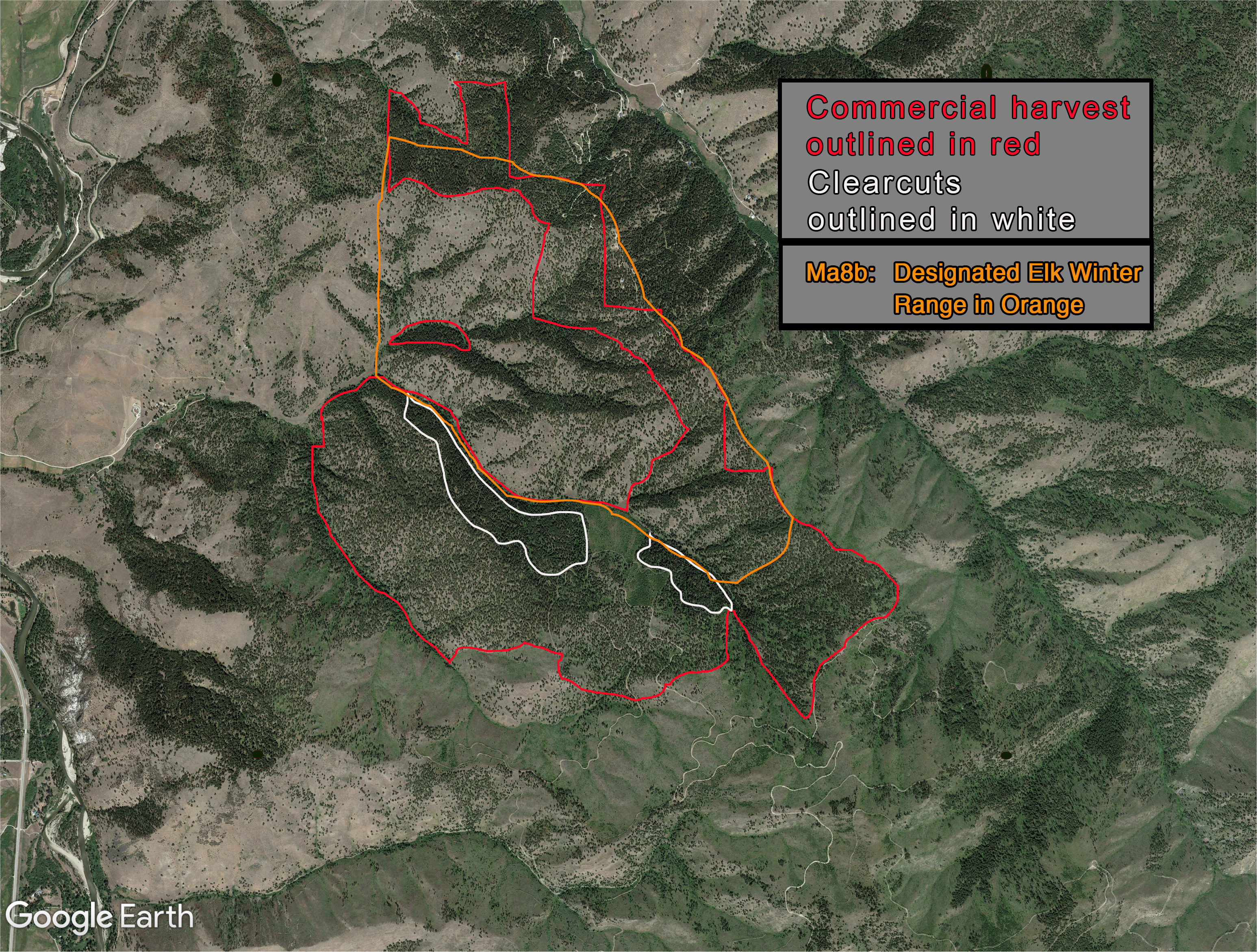
WSA Issues
Mountain Bikes Destroy Wilderness Characteristics
"No mechanized travel of any sort"
KEEP WSAs WILD
So they can one day be Wilderness

It is the final push to keep WSAs wild
and uphold the ban
on mechanized (mountainbikes) and motorized transportation.
Study after study show bikes are harmful to wildlife. With so few wild areas left, we need to act now. The new Bitterroot National Forest Supervisor, Matt Anderson, will soon be deciding to uphold the current Travel Plan or to amend it and let bikes in these sensitive areas. His decision will set a major precedent for WSAs. We must let him know these last remaining wild lands need to be free of mountain bikes.
We have limited time.
Please email a short letter to Forest Supervisor Matt Anderson. Your letter need not be long, it just needs to be sincere to let him know you care about wild places. Use the talking points below to help. While these points are important, its most important to use your own words and let him know how important wild places and the plant and animals who live there are to you. The more personal the better.
- Support the current Travel Plan excluding motorized use and mechanized use from the Sapphire and Blue Joint WSAs.
- There’s no shortage of opportunities on the forest for bikers to ride. Please don’t open up these sensitive areas when other places exist for this type of recreation.
- These WSAs are important wildlife sanctuaries and corridors. With so little wild areas left, we need more protection not less.
- There are many mountain bikers who support not riding in these areas and gladly ride in other places.
- Future generations will be thankful we fully protected these areas. We need places where the WILD truly exists without motors and bikes.
We can save these WSAs; but we’ve got to act now. We need to speak for the animals and plants who call these areas home. Decision makers are use to generic form letters so personal letters written in your own words are best. A good old-fashion paper letter is very powerful. Also, call and leave him a short message. Let’s let Supervisor Anderson know we honestly care about these places and encourage him to make the right decision for wild lands.
Once it’s gone, it’s gone forever.
CONTACT
Supervisor Matt Anderson
matthew.anderson3@usda.gov
Bitterroot National Forest
1801 North 1st
Hamilton, MT 59828
406-363-7100
Wilderness Study Area News
Judge Upholds Travel Plan But....
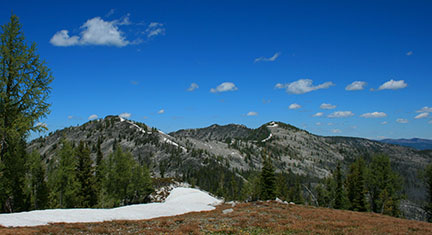
...Opens New Objection Period Concerning Mountain Bikes in WSAs
BNF Extends New Objection Period and Opens it to Everyone
Comment deadline was November 19
Please Help Us Protect Wilderness Study Areas in the Bitterroot National Forest
We need your help. An objection period is open concerning mountain bike use in the Blue Joint and Sapphire Wilderness Study Areas (WSAs). Please let the BNF know you value these places for their wild character and that mechanized travel is not appropriate. We need more places where natural wonders exist free from noise, speed, and the hustle and bustle of modern life.
Background
The 1977 Montana Wilderness Study Act (sponsored by the Bitterroot’s own Lee Metcalf) required the Forest Service to maintain "their presently existing wilderness character and potential for inclusion in the National Wilderness Preservation System". The Ninth Circuit Court has ruled this requires the FS to maintain a study area's 1977 wilderness character, including opportunities for solitude comparable to those in existence in 1977.
We thank former Forest Supervisor Julie King for taking needed steps to protect our WSAs. As she wrote in the 2016 Bitterroot NF Travel Plan's Record of Decision, “I feel we have an obligation to manage WSAs for those social and ecological characteristics to preserve wilderness character. These actions assure that Congress’ intent for these areas will be honored while preserving their potential for inclusion in the National Wilderness Preservation System.”
Mountain bikers teamed with motorized users and sued the Bitterroot National Forest (BNF) to overturn the BNF Travel Plan's closure of approximately 121 miles of trail in the Sapphire and Blue Joint Wilderness Study Areas to motorized and mechanized (bicycle) travel.
Recently, the Federal District Court agreed with the BNF decision, stating “the Court defers to the Forest Service's rationale that the social impacts, including the feeling of being in an undeveloped setting, are sufficient to support its decision to close RWAs and WSAs to bicycle transport”. The court found the change in percentage of trails listed as closed to mechanized travel between the DEIS and the final decision (9% of 1,222 miles available previously on the Bitterroot, later corrected to near 10%) to be “a minor variation…no supplemental EIS was required”. However, he noted the closure of trails to mountain bikes in the WSAs came late in the process. The judge did not overturn the decision about mechanized travel but did ask the BNF to provide another comment period specifically relating to mountain bike use in the WSAs.
The Blue Joint and Sapphire WSAs are home to elk, wolverine, bull trout, deer, mountain goats, golden eagle, pika, and species which need large undisturbed landscapes. They protect our clean water and outstanding fisheries. They represent some of the last remaining wild places in the lower 48 and serve as valuable corridor/linkage routes for wildlife and flora. They are rare wild areas where natural processes still dominate, and humans can find solitude and untrammeled beauty.
Gold Butterfly Project
Brief History and Update
The Gold Butterfly Timber Sale was proposed under the Healthy Forest Restoration Act (HFRA) and received many comments. Concerns about old growth, new roads, who will pay for road maintenance, bull trout, lynx, sedimentation issues, and clear cuts are just some of the concerns raised by the public.
The BNF offered three alternatives; a no action alternative, their preferred alternative (alt 2), and as a result of public pressure, added a third alternative which would eliminate treatments in old growth and reduce road construction.
The Final Environmental Impact Statement (FEIS) was published in March 0f 2019 with Alternative 2 being selected by the Forest Service. The public has the right to comment on this decision and many did. In June of 2019 the Draft Record of Decision (DROD) was released. Forest Supervisor Matt Anderson choose Alternative 2 with modifications. The modifications concern 16 units of Old Growth which were slated to be clear cut. 14 units were changed to “commercial intermediate treatment” and two changed to “non-commercial intermediate treatment.” No other issues brought forth by the public were addressed. While it may be a small step in the right direction, “retaining the large trees contributing to the old growth structure” is already required under HFRA. It’s worth noting that one of the purposes of HFRA is also to “enhance productivity and carbon sequestration”. The BNF claims that while this might be a purpose, it is “not a requirement of HFRA, however HFRA was designed to achieve these purposes.” Go figure!
The public has a right to formal objections to the decision. Eighteen people (including FOB and Wild Earth Guardians) objected to this alternative during a meeting held in August of 2019. The vast majority of objectors continued to raise environmental issues. Surprisingly objectors were given only five minutes to express their concerns and none of those concerns were addressed during the meeting by Forest Service employees.
On Sept. 3, 2019 the Response to Objections was released. One issue regarding Canada lynx which needed clarification will be incorporated into the analysis and recorded, however, it’s unclear presently what that means. No other concerns brought forth by the public were addressed. According to Keith Lannon, the Objection Review Officer in charge of the proceedings, “The remaining issues raised did not warrant instruction”. Its disappointing that issues such as road costs, bull trout, Old Growth, sedimentation, large clearcuts, human health, owls, and all the other issues raised by the public, “did not warrant instruction”.
Currently FOB as well as individuals and other environmental groups are awaiting the Final Record of Decision (FROD). Upon its release, FOB (and others) will determine what course of action to take regarding this massive project.
If you have not submitted comments, you can still send an e-mail to Matt Anderson expressing your concerns: matthew.anderson3@usda.gov
Here are comments by one of our members as an example
Introduction and ISSUE #1: COLLABORATION
I am writing this official objection as I believe my previous comments during scoping and on the DEIS were insufficiently addressed in the FEIS. Also, there are project treatment changes outlined in the Draft Record of Decision (DROD) that need to be addressed and show that inadequate analysis was carried out and impacts not disclosed from the changes proposed, suggesting they are arbitrary and capricious.
Gold Butterfly (GB) is the largest project in many years on the Bitterroot National Forest (BNF). While it proposes some positive actions and addresses some forest needs it is very controversial and viewed negatively by a large majority of official commenters to date on a range of issues. The core issues of concern relate to logging old growth (OG), constructing many miles of new roads, and its negative impacts on wildlife, habitat, and water quality. No project in decades has proposed logging hundreds of acres of OG or building/reconstructing over 40 miles of roads. It is because of these controversial and damaging intentions that the public overwhelmingly provided comments and recommendations that led to the “no new roads, no treatment in OG” Alternative 3.
But make no mistake: Alternative 3 was deliberately manipulated to misrepresent what the public wanted regarding road construction and OG. The public wanted no new road construction. By including 16.5 miles of undetermined/ghost road reconstruction in Alt 3, the BNF perverted the public’s comments and priorities. Likewise the public repeatedly requested light handed OG treatments (e.g. prescribed burning, non-commercial thinning); they did not ask for no treatment whatsoever. In emails that were obtained through FOIA FS personnel including then Stevensville District Ranger Sabol chose the “no treatment in OG” to create a more stark contrast between the 2 Action alternatives. It did not represent what the public wanted. This was a blow to honest attempts at collaboration by the participating public with the FS.
Despite this deliberate “poison pill” Alt 3 achieved the project’s Purpose and Need. It was an opportunity to galvanize a divided community and find common ground among the 2 forest collaboratives, the timber industry, conservationists, and the public-at-large. This certainly has not happened on the Bitterroot in the last 40 or more years; maybe never. While the FS touts “collaboration” and the BNF’s new leadership is asking for a project founded on collaboration (GB could have been one, based on common issues of OG, roads, wildlife, water) the end result as seen in the selected Modified Alternative 2 simply shows the collaborative process as just a box to be “checked off.” The engaged citizenry worked incredibly hard and were thoughtful; the agency just went through the motions and not getting the collaborative outcome it wanted, they ignored it.
As a member of the Bitterroot Restoration Committee (BRC)—but not speaking for the collaborative in this Objection—we have been discussing and visiting the Butterfly area and project iterations for about 10 years, far longer than the new-ish Project Leader, the multiple Stevi district rangers, and the new Forest Supervisor. The BRC repeatedly raised concerns about OG, roads, water quality, wildlife, habitat, and the reopening of Butterfly Creek Road 13111. Our concerns were communicated to FS personnel over the years and Modified Alternative 2 did not nearly adequately address those concerns. The selected alternative is in no large, medium, or even small way aligned with the public, the collaboratives, or the alternative workshop results. Negligible changes were made to the original Alternative 2. What were these changes and why they were they made lead me to issue #2.
ISSUE 2: OLD GROWTH
OG regeneration units were changed to commercial intermediate cuts (Units 17,18,23a,24a,25a,25b,25c,28,30a,30b,30c,30d,53,58a) and non-commercial intermediate with DBH limits (Units 13b and 93). The BRC was told on 7/22/2019 by GB Project Leader Jeff Shearer that the changes were recommended and made by silviculturist Hartless and biologist Lockman to “move the needle” a little towards public views on OG. This is untrue. Email dated 2/19/2019 from Hartless to District Ranger Sabol (obtained through a FOIA) explicitly describes what modifications silviculturist Hartless was recommending in the relevant units so as to meet the project’s Purpose and Need and retain OG characteristics. It is very different from what materialized in the selected Modified Alternative 2.
So who made the changes and why? I do not know. Jeff Shearer was asked if HFRA constraints/requirements forced the change of regen units so that various stands would not lose OG status, which seems prohibited under projects utilizing HFRA. Mr. Shearer said this wasn’t the case. I still question if HFRA limits what veg treatments can occur in OG and if Modified Alt 2 still violates HFRA.
Here’s what we do know about the veg treatment changes in OG: The FEIS does NOT DISCLOSE the IMPACTS of changing treatment from regen to commercial or non-commercial intermediate treatment. This significant change was not analyzed.
We also know that the project’s silviculturist recommended a very different modification to these regen units as seen in the above-noted email. Hartless’ modifications received a diameter cap of 16” in units 17,18,24a,25a,25b,25d,30a/b/c/d, and 53. Having a diameter cap would certainly have met or likely exceeded OG requirements, while importantly achieving the Purpose and Need.
As it is in selected Modified Alternative 2 there is much less of a guarantee that OG status will be maintained as declared in the DROD. Why? Because units under intermediate harvest will likely be taken down to the bare minimum of 8 trees/acre (TPA) using a DBH>21”. BUT they will not be bored so there is no guarantee they will satisfy the greater than or equal to 170 year age requirement to qualify as OG. Without verifying age through coring the BNF cannot guarantee OG status will be maintained. Additionally, with the veg treatment change the Purpose and Need may not be met in those units to any significant degree.
Regarding DROD language on page 3 for converting Unit 13b from regen to non-commercial intermediate 7” DBH limit: The description is simply inaccurate. Unit 13b is dominated by Douglas-fir with widespread mistletoe. Ponderosa pine is a small component. Here again the FEIS does not disclose the impacts of changing the veg treatment. The FS will likely be perpetuating the mistletoe and making it difficult to reforest the unit with ponderosa. Analysis is lacking.
Old growth on the BNF will be materially less after this project. Current estimates on the Forest for OG is 12-13%; the Sapphires ~10%. The 2006 Forest Plan Revision document put a 15-20% Forest-wide desired condition goal. This project moves us away not towards that desired condition. Historical estimates put OG at 30-50%. If the FS is always citing historical norms like species composition to justify particular treatments, then why are we logging vast amounts of OG and moving the forest farther and farther away from historical norms?
Over 10 miles (10.24) of temp (6.59) and spec/permanent (3.65) are proposed through units containing OG, with proposed permanent roads going through at least 9 units of OG. Additional miles of roads will be constructed or “reconstructed” through OG via reopening of vegetatively reclaimed undetermined roads. Permanent roads are proposed through OG to reach adjacent areas that are harvest units. In sum, there is a large amount of road building or road reconstruction through OG. This will both directly and indirectly—in a significant way—affect OG conditions, OG-associated species, and obviously OG habitat—contradicting the DROD statement that no road construction or undetermined road reconstruction will significantly affect in a direct or indirect way any resource.
University of Montana Forestry Professor Andrew Larson, both in his own forest restoration research (Individuals, Clumps, and Openings—“ICO” management approach) and as co-author in the 2015 Hessburg research article (please refer to BRC citation) recommends retaining and expanding on existing relic trees, old forest, and post disturbance large snags and down logs in dry pine and dry to mesic mixed-conifer forest landscapes. The BRC has recommended to the BNF in its GB Objection comments that restoration principles and management strategies as outlined by Larson and Hessburg be applied to GB. I concur. And an essential part of this is not logging “large, old trees that provide a critical backbone” to the forest types described above and prevalent in the GB project area.
ISSUE 3: ROADS
Our forest roads are deteriorating as I write this. In the 20 years living here I’ve witnessed many popular roads degrade from pleasant and passable, low clearance routes to compulsory high clearance roads. Roads affect everything whether negatively (sediment into streams) or positively (public access to recreate). The BNF is not complying with its Forest Plan Standards—specifically J1 and J2. Our road transportation system is unaffordable and unsustainable. It probably causes more harm than anything else on the forest. Yet GB proposes 40.2 miles of new road construction (6.4 m of spec, 17.3 m of temp) and ghost road reconstruction (16.5m). Per the FEIS only 0.9 m of the 22.3 miles proposed road decommissioning requires any treatment on the ground. So you have a 40:1 ratio of ground-disturbing road construction versus true road decommissioning. It’s completely out of balance and out of sync with what the public wants, what the agency can afford, and what the ecosystem can tolerate. The assertion that 40.2 miles of road construction/reconstruction “was not determined to present a significant direct or indirect effect to any resource area” is not a serious statement or an accurate one. These 40.2 miles will assuredly and significantly fragment habitat, disrupt and displace wildlife, spread invasive weeds, increase sedimentation into streams, and more. Proposed design features are inadequate to handle this level of road building and disturbance.
The fact that the project requires a FP amendment for EHE regardless of additional road building is case in point, and will only exacerbate EHE compliance. The vision and goal in the 2006 FP Revision was reducing the road transportation footprint, not increasing it. The agency is spending hundreds of thousands of dollars of our taxpayer money to build or reconstruct these new roads,to the detriment of many resources, and in no small, insignificant way.
As a longtime member of the BRC I believe in restoration principle #13: “Establish and maintain a safe road and trail system that is ecologically sustainable.” The proposed road construction in GB is counter to this principle. Likewise, Hessburg and his coauthors (including multiple Missoula-based researchers) recommend that “forest management activities should avoid the development of additional permanent road networks, staying away from especially sensitive areas.”
Adding to an unmanageable forest road system will lower the landscape’s resilience to climate change effects such as severe rain events. This puts public access and safety at risk, adds to taxpayer expense, and will cause unnecessary ecological harm, adding difficulty for species to move and disperse as the climate changes.
An example of road plans that make no sense to me: In the FEIS appendix, map #4 for Alternative 2, there is a road in units 46, 47 that is a proposed temp road that connects undetermined road segments—the whole thing proposed for storage afterwards. I thought temp roads will be decommissioned post project? Why is this temp road to be stored? Is it temp or permanent?
A concern I have brought up in past GB comments that’s only become more problematic as I learn of FS road plans is FR13111, running adjacent to Butterfly Creek. It is a closed road that’s become a de facto trail of high recreation value and use. I now understand that a road excavator machine will be driven on it in addition to full sized vehicles for various uses. When the BRC looked at a much smaller (few hundred acres) project about 10 years ago our committee had strong reservations about reopening FR13111 to any traffic being so close to the creek. Indeed BNF hydrologist Ed Snook wrote an overview of the project including natural resource implications. He made the determination that “Use of this access would trigger ESA consultation, create aquatic impacts and add complexity to project.” (See reference—Snook-“Butterfly Creek Ponderosa Pine Restoration Project”) Even with suggested mitigation sediment would not be eliminated per Mr. Snook.
SUMMARY
Over 3/4 of official public commenters on GB requested the BNF choose Alternative 3 or a variation on Alt 3. What made—and still makes—GB an unpopular project?
- New roads,
- Logging OldGrowth
- Impacts on wildlife
- Water concerns.
These were the top 4 issues. Of official commenters who specifically raised these 4 issues the percentage with a negative project view were 96%, 90%, 92%, and 87%, respectively.
The same issues were raised again and again by the 2 collaboratives, alternative workshop attendees, and the public-at-large. It’s no surprise: Old growth logging and more road building are not just unpopular but ecologically harmful. The public gets it.
The agency has a near perfect overarching “mitigation/design feature” opportunity: Go back and choose Alternative 3 and modify it to decommission all undetermined roads and allow treatments in OG that preserve large, old trees. By doing so the BNF will have a project that achieves the Purpose and Need and one the whole community can support—a first in decades.

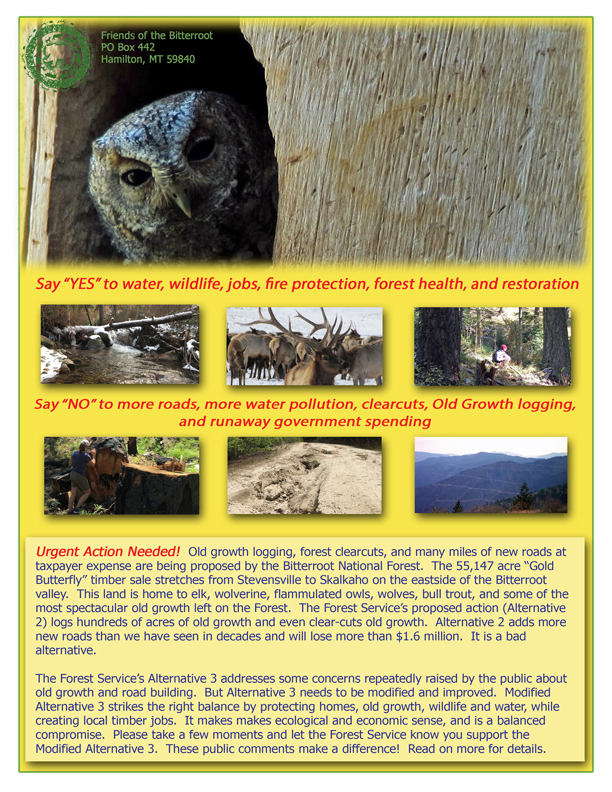
Gold-Butterfly Project Issues:
Issue 1: Roads/Sediment/Water Quality/Fisheries
- The largest, overriding issue in Gold-Butterfly (GB)
- Has the greatest consensus/ zone of all agreement of all issues
- Current Forest road system is non-resilient, oversized, unaffordable, unsustainable, unmanageable
- Roads are not being maintained to BMPs
- Forest-wide Management Standards
- [J1] “Roads will be maintained to design standards.”
- [J2] “Roads will be closed to public use if adequate road maintenance funds re not available.”
- Restoration principle #13: “Establish and maintain a safe road and trail system that is ecologically sustainable.”
- Forest-wide Management Standards
- GB roads and impacts
- Chronic sediment source including 303(d) listed Willow Creek and N Fork Burnt Fork
- Bull trout is an ESA-listed threatened species
- In Willow Creek, next to a legacy road that is not maintained to BMPs and will be the major haul route
- Too high a road density in PA (Project Area) currently
- Elk Habitat Effectiveness (EHE) standard will need to be amended
- Fragments wildlife habitat, disturbs feeding, nesting, breeding
- Bull trout is an ESA-listed threatened species
- Chronic sediment source including 303(d) listed Willow Creek and N Fork Burnt Fork
- Roads are not being maintained to BMPs
- The BNF “challenge” and overriding NEED in GB PA:
- Identify a resilient future road system that:
- Restores aquatic systems, watersheds, and wildlife habitat
- Ensures reliable recreational access
- Allows the FS to adequately maintain it within annual budgetary constraints
- Facilitates adaptation to climate change (e.g. severe weather events, wildlife movement corridors).
- Compliant with Management Standards [J1, J2] and with Travel Management Rule (subpart A)
- Consistent with Restoration Principle #13
- Identify a resilient future road system that:
- A GB Alternative would:
- Do the above 1-6.
- Not add more roads to the PA (no new roads-temporary or permanent)
- Reduce road density by doing additional decommissioning than currently proposed
- Fully obliterate (and do necessary rehab) of ALL unauthorized ORV/ATV routes
- Helping to restore soil productivity, reduce noxious weed spread, restore hydrologic functioning
- Ensure sufficient BMP road upgrades (esp. Willow Creek Road) that are maintained during the GB Project’s life AND afterwards
- Not be opening up closed or “undetermined” roads that are naturally re-vegetating or decommissioning themselves
- Annually monitor culverts in PA to ensure safety and proper function
- Work with private landowners to improve fish connectivity between isolated populations in Willow Creek and N. Fork Burnt Fork and the Bitterroot River proper, thereby adding resilience to the fishery (e.g. in case of fire, other disturbances)
Issue 2: Fire (and Insects, Disease)
- A stated ‘Need for Action” by the FS in their GB scoping letter is to: Improve landscape resilience to disturbances (such as insects, diseases, and fire) by modifying forest structure and composition, and fuels
- What scientific support does the FS have that using active management to modify forest structure and composition, and fuels will improve landscape resilience to disturbances as noted above?
- Fires, Insects, and Disease are integrally related to impacts from climate change (CC). We cannot Forest-manage our way out of CC
- Fires, Insects, and Disease are all natural responses to conditions, and are a natural part of forest succession that help sustain ecosystems.
- Doesn’t logging and its associated disturbances adversely impact the resiliency of soil, mycorrhizae, plant ecosystems (grasses, shrubs, etc.) and much wildlife?
- Priorities related to Fire:
- If home protection is the goal, then the Home Ignition Zone (HIZ) is the proven key (100’ from home)
- Cohen’s Roaring Lion Fire analysis: (page 12/13) “Importantly, vegetative fuel treatments outside the HIZ (100’) for preventing home destruction during extreme wildfire conditions do not prevent fire spread through the treatment area into the HIZ and do nothing to change home ignition potential within the HIZ.” (Reinhardt et al 2008; Calkin et al 2014) “Wildland fuel treatment for community protection largely using forest thinning adjacent to but outside HIZ does not mitigate the ignition factors that primarily determine home ignition potential within the HIZ.” (Reinhardt 2008, Calkin 2014)
- More background on Fires (Missoulian article)
- Professor Andrew Larson (UM, Forest Ecology)
- Strongest predictor of number and intensity of wildfire is summer drought.
- Thinning and fuels reduction treatments will almost never prevent a wildfire, but may moderate its behavior and effects
- Strongest evidence for thinning and prescribed fire treatments in dry, low elevation ponderosa pine forests
- Humans are driving CC. Fires may cause short term loss in water quality but benefits in long term
- Kevin Barnett (Dept. Economics, UM)
- Cost-effectiveness of fuel treatments is highly questionable. There is little evidence that fuel treatments result in reduction of wildfire management costs.
- Tania Schoennagel (Forest landscape ecologist and fire researcher, University of CO)
- No amount of thinning will outpace influence of warming on wildfire area burned (Climate Change)
- It’s a crapshoot whether the treatment you do will encounter wildfire in the next 10-15 years (relates to FS in ability to keep up costly “haircuts”)
- Emphasize fuels near residential development in low elevation forest; private lands in the WUI
- Allow more wild and prescribed fires to burn
- Professor Andrew Larson (UM, Forest Ecology)
- If home protection is the goal, then the Home Ignition Zone (HIZ) is the proven key (100’ from home)
- A GB Alternative Would:
- Thin in the Community Protection Zone (CPZ) - ¼ mile from structures
- Allows firefighters to aggressively fight wildland fires and protect communities
- Emphasize CPZ thinning where it overlaps with BNF Forest Plan Management Area 1 (timber emphasis)
- Utilize hand thinning, prescribed burning (as touted by Canyon Creek project proposal as effective mitigation)
- Devise a project that caters towards hiring skilled locals and local businesses to do the work.
- Support additional programs, funding, education for homeowners to effectively treat their HIZ
- Recognize that insects and disease are natural parts of the ecosystem, even at epidemic levels, and if ecosystem resilience is your goal (and not timber as an agricultural product) then you would not use treatments such as clearcutting, to manage an endemic and pervasive “disease” such as mistletoe.
- Thin in the Community Protection Zone (CPZ) - ¼ mile from structures
Issue 3: Wildlife
- Impacts largely tied to existing forest road system and proposed new roads
- Fisheries: Bull trout, western cutthroat
- Culvert at North Fork Willow Creek to be pulled
- Butterfly Creek culvert: no plan for replacement due to cost, low priority by FS
- Road, sediment issues as described earlier
- Bull trout is on ESA list. How will project impact bull trout?
- Will there be adequate buffers for nesting territories of goshawks, flammulated owls, great gray, and barred owls, pileated woodpeckers?
- Forest Plan will have to be (once again) amended for EHE.
- More roads will degrade EHE, impact elk
- Original scoping letter refers to 3900 acres treatment in MA2 and 3100 acres in MA3a.
- MA2 goals include optimizing elk winter range using timber harvest and providing moderate levels of wildlife habitat and old growth.
- How do proposed MA2 treatments comply with these goals?
- MA3a is described as mostly elk winter range. MA3a goals emphasize big game cover and old growth, with moderate levels of big game forage.
- How do proposed treatments in MA3a correlate with these goals?
- Winter range thermal cover Forest Plan standard will have to be suspended, impacting habitat
- Disturbance to mustelids in PA (martens, maybe fisher, wolverine), affecting habitat, maybe leading to trapping mortality with more roads and trapping access. Note: wolverines have been documented in PA this year (2017)
- Need for GB proposal that considers CC and future impacts on wildlife with needs for connectivity and biological corridors free of roads
- Documented lynx habitat in PA. Was this accurately and consistently measured/mapped? What protocol was used?
- MA2 goals include optimizing elk winter range using timber harvest and providing moderate levels of wildlife habitat and old growth.
Issue 4: Old Growth
- Integrally tied to old growth dependent species
- There is significant old growth documented in GB mapped “WUI” (an arbitrary, not real-world boundary, example: standing on road at Butterfly – Eastman ridge divide you are declared to be in the WUI)
- We have too little old growth. The BNF has been managed down to a level well below the historic range of variability for old growth
- Often areas with numerous (defined) old growth individual trees do not qualify as ‘old growth’ given the many required criteria and gerrymandered tree stands
- Proposed new roads transect areas of old growth and through documented territories of sensitive species (like flammulated owls)
- As proposed many old growth trees will be logged because of non-lethal mistletoe that is pervasive and endemic to the PA and used by any wildlife species
- How do proposed treatments in MA3a comply with its goal of “emphasizing old growth”?
- A GB Alternative Would:
- Retain all old growth individual trees
- Construct no roads
Issue 5: Climate Change
- The FS has a substantive duty under is own FS manual to establish resilient ecosystems in the face of climate change. The FS’ own science identifies the risk of CC and it must address the risks of CC when managing road activities on the National Forest.
- Many of the aforementioned fire/disease/insect issues are related to warming due to anthropogenic CC.
- We need to create a sustainable, resilient road system that is adaptable to CC (e.g. extreme weather events like the Willow Creek Road failure). Many forest roads are poorly designed and located to handle severe storms
- Biological corridors will become more vital to allow for species movement, especially North-South. This landscape connectivity will only become more important to allow for ecosystem resilience
- Our MT Forest Restoration document (Appendix D) specifically addresses CC
- “Increase resiliency of nature fish species by promoting large, well connected stream networks, removing barriers, and creating aquatic refuges at various elevations.”
- “Climate change impacts on water flow, yield and riparian function are serious, and will aggravate and exacerbate other existing stresses. Wherever possible, target actions aimed at improving aquatic systems and headwater resilience.”
- A GB Alternative Would:
- Identify CC as a risk that needs to be addressed.
- Take specific actions to facilitate adaptation and resiliency to CC in the PA.
- Not include any constructed stream crossings that impair aquatic systems and headwater resilience.
- Prioritize removal of ALL fish barriers in the PA to improve native fish resiliency.
Issue 6: Stony Mountain IRA
- Will the logging proposed (commercial and /or non-commercial) degrade the Wilderness character of the area?
- Is a key link in the Sapphire Crest Wildlife Corridor
Issue 7: Recreation
- Support recommended actions in proposal
- Gleason Lake Trail
- A recreational opportunity
- Needs restoration work
- Needs trail work, signage – an excellent opportunity for quiet use trail that groups and individuals could volunteer to do the work
- Is currently being illegally accessed by ATVs which are causing resource damage and leaving trash
- Related to Gleason Lake Trail, Rd 13131 is a gated road currently closed year-round to motorized. This may be the source of the illegal ORV incursions into Gleason. This road is proposed as a possible “rock collection site” (since Burnt Fork site would be closed)
- This road should remain closed year-round to motorized. Opening it would likely aggravate the illegal and damaging ORV incursions
- Again, related to sustainable road system in the PA: the road density should be lowered to allow for sufficiently managed and maintained roads for a better quality recreational experience by the public
- A GB Alternative Would:
- Restore and improve the Gleason Lake Trail and area.
Issue 8: Post-project Monitoring and Restoration
- As Per our Committee’s mission and Restoration Principle Guidelines, monitoring should play a key role. Likewise, it is incumbent upon the FS to monitor a project’s effectiveness and outcomes. How does the FS plan to perform this for GB?
- Performing and completing the needed restoration work is of paramount importance.
- A GB Alternative Would:
- Include a secure budget for long term Monitoring and Restoration work.
- Partner with interested organizations and groups to assist with unfunded or supplemental restoration activities.
- Include a secure budget for long term Monitoring and Restoration work.
Over-arching principle: Resilience
- The project’s purpose and Need should be revised to include
- Improving landscape resilience to disturbance by addressing its over-sized, under-maintained, unaffordable road system *
- Ecosystem resilience is deleteriously affected by roads that fragment habitat, lowers water quality and impacts fisheries, create fish barriers, alter species distribution, and impact various species’ nesting, feeding, and breeding
- Extensive logging adversely impacts resilience of soils, microorganisms, plants and many wildlife species
- A GB Alternative Would:
- Revise the purpose and need to do (see above *)
Gold Butterfly Timber Sale General Info
This 52,000 acre timber sale is located east of Corvallis, Montana and is the largest timber sale in recent history on the Bitterroot National Forest. Currently there are 147 miles of roads within the project boundary with many miles of those roads not adequately maintained and up to Forest Service standards. (There are over 2000 miles of roads on the BNF). The recent June 13th 2017 Willow Creek Road failure which sent tons of sediment into Willow Creek is an example of an unmaintained road system. If that’s not enough, the Forest Service plans to build even more new roads in the area.
Willow Creek itself is listed by the Montana Department of Environmental Quality as an impaired stream. The stream is home to Bull Trout which is a Threatened species. The main access for logging trucks is on Willow Creek Road which in many places is within five feet of the creek.
The proposed timber sale is in designated Lynx habitat. Lynx are a Threatened species. Flammulated owl, which are listed as a sensitive species are found in the project area also.
Illegal Off Highway Vehicle (OHV) use in the area has caused severe damage in many places. The Forest Service is unable to prevent this yet is proposing new roads in the area which will only encourage more abuse. The Forest Service even has plans to have 40 acre (or larger) clear cuts and for cutting Old Growth trees. This on a forest that does not meet Old Growth Standards. The area is one of the few North-South wildlife corridors that allows for the movement of animals over relatively large areas. This seems an example of the FS wanting to build more roads in order to cut trees in order to pay for the roads which cause the damage.
The Bitterroot Forest has unspecified plans to log in the Stoney Mountain Inventoried Roadless Area, which is a premier wildland component of the Sapphire crest biological corridor.
According to the BNF, 20,000 trucks will enter and exit on only one haul road; Willow Creek Road. Given the road system is not up to standard, one can imagine what impacts 20,000 trucks will have. It is probable that this sale will once again cost taxpayers money and not pay for itself.
The Forest Service needs to hear comments from the public. The Draft Environmental Impact Statement (DEIS) will be out in the next few months and it is then that the public needs to voice their concerns. Upon the release of the DEIS, FOB will notify members and provide critical information for citizens to use in their comments. Stay tuned.
Remember, only you can prevent mismanagement of YOUR public forest.

Friends of the Bitterroot P.O. Box 442 Hamilton, MT 59840


